4 Days in Paris: How to Plan the Perfect Paris Itinerary
When you think of Paris, you will probably already have a picture perfect image in mind. Is it delicious food and wine, paired expertly by some of the world’s best chefs? Is it romantic walks on bridges over the Seine at twilight, with the lit up Tour Eiffel in the background? Or perhaps you’re dreaming of delving into the top notch art, from the ancient and medieval to the modern displays of the Palais de Tokyo?
In all cases, 4 days in Paris will allow you to experience a little bit of the best of what the City of Lights has to offer.
We recently spent a week in Paris – we have both visited Paris before, Matt has been multiple times – and spent our days walking A LOT, exploring new neighborhoods that we never made it to on shorter, previous trips. Canal St. Martin and Montorgueil are two of our new favorites.
At the beginning of that trip, my French was gone. I had spent seven years in middle school and high school learning French and was a pretty strong speaker on my first two trips to Paris. But by 2021 I had not spoken French in almost 10 years, and I was stumbling over my words, accidentally speaking Spanish, and not able to understand anything.
By day 3, I was back! I even got a compliment from a Parisian that my French was good – get this – “for an American.” What a nice, extremely backhanded compliment! High praise coming from a Parisian.
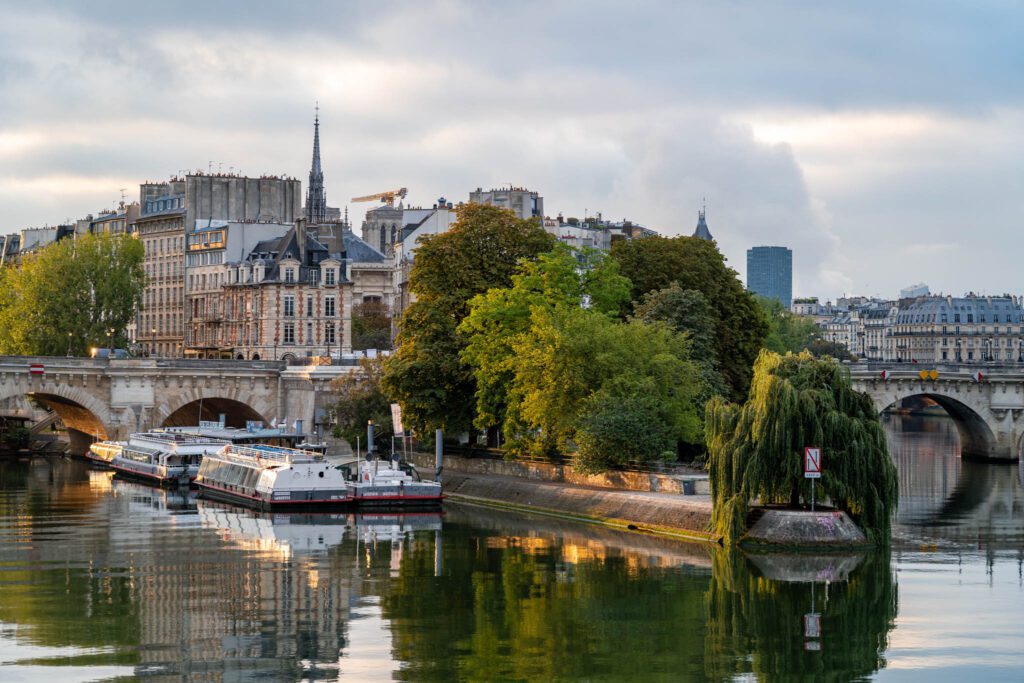
With that preamble out of the way, let’s talk about what you’re going to find in this guide.
- Some tips and tricks about Paris that we learned on our latest trip that we think will be helpful (for example, be prepared for everyone to be smoking at all times).
- A detailed 4 day Paris itinerary, with a day-by-day structure to help you organize your trip and our thoughts on what to do and see in Paris.
- Our recommendations on what to do with more and less time in Paris.
- A few important logistics – getting around, getting to and from the airport, etc – that you need to know to avoid speed bumps.
Thanks for bearing with us on the intro. If you’re still here, grab a cup of coffee or a glass of wine, this is a long one.
We’re proud of this guide, and think it gives you a blend of the “best-of” Paris and some experiences that most people don’t get, but are great opportunities to meet locals and learn about French and Parisian culture and history.
Disclaimer: Some of the links in this post, like hotel links, are affiliate links, meaning at no additional cost to you, we make a little bit of money if you click through and book. That being said, we would never recommend something to you that we don’t stand behind 100%.
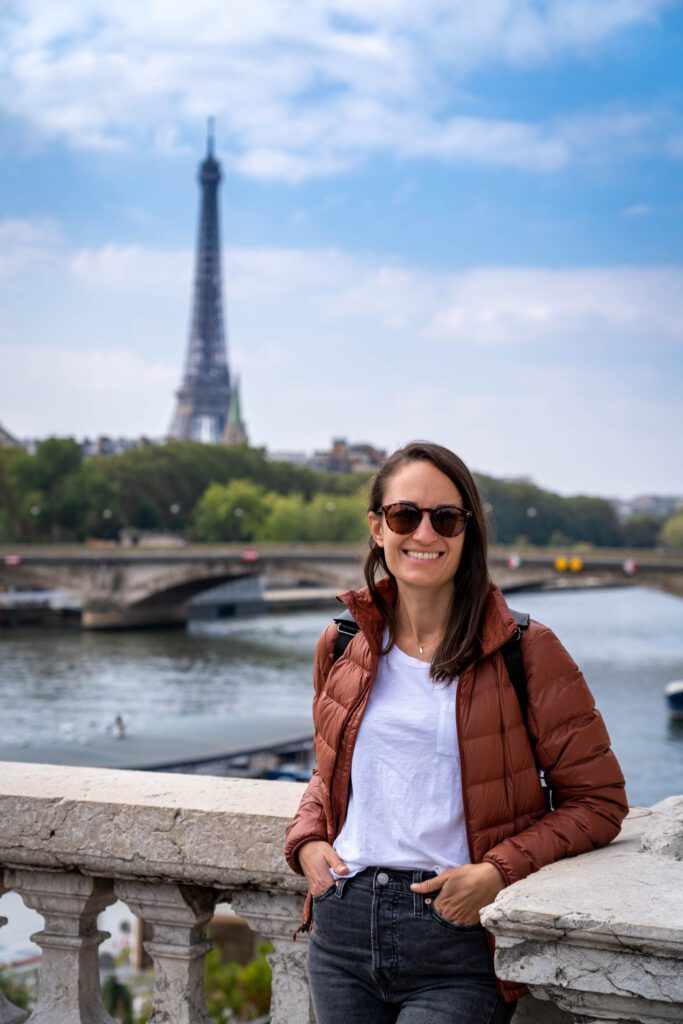
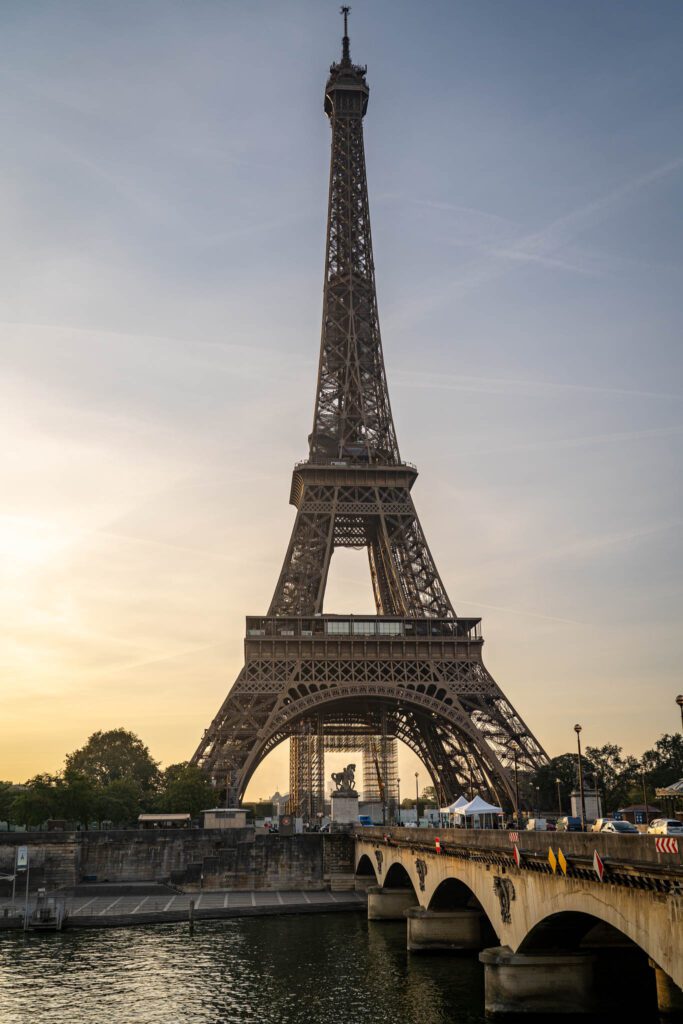
Where to Stay in Paris
Paris is divided into neighborhoods called arrondissements – each has its own history and personality. If you look at the city map, imagine a snail’s shell coming out from the very center and circling clockwise and you’ll get the logic behind the numbers.
Don’t have time to read the entire guide below? Here’s a quick summary with some of our top picks.
- If it’s your first time in Paris: Stay either in the 7th Arrondissement at the feet of the Eiffel Tower, or in the 2nd Arrondissement, our new personal favorite after our last trip.
- If you’re looking for a romantic getaway: Stay in Montmartre (the 18th Arr.).
- If you’re on a budget and looking for an affordable area: Stay in either Canal St. Martin (a cooler area, but further out) or the 9th Arrondissement (central and affordable with great nightlife).
- If you’re looking for the coolest neighborhoods: Stay in the Marais (the 3rd Arr.) or Sentier (the 2nd Arr.).
Below, we’ll give our best picks for accommodation in the Marais and Montmartre – two of the very best bases for anyone exploring the city during a 4 day trip. You can find the other areas in our guide to where to stay in Paris.
Le Marais (3rd & 4th Arrondissements) – The Heart of Paris

This is the very heart of the city, with gorgeous old apartment buildings with views of the Tour Eiffel and a maze of old streets with cobblestones and quaint shops.
You’ll rub shoulders with elegant suit-clad business people walking home with their baguettes in the evening, but will also get to mingle with the hipsters who go out to the area’s many bars and cafes. Bakeries are on every corner and you’ll be steps away from the Louvre, Notre-Dame cathedral and more.
The Marais is also a great place to shop. The Rue de Rivoli is lined with bigger brand stores going towards the Louvre, but if you stick around in the area of Rue Vieille du Temple and Rue des Francs Bourgeois you will find some more unique shops, from bespoke perfumeries to quaint fashionable clothes stores.
Places to Stay in Le Marais
The Hotel Les Tournelles, just near the Place des Vosges, is one of our favorite picks for staying in the Marais as it combines a modern, comfortable interior with an outstanding location for your 4 day trip to Paris. Upscale toiletries and rainfall showers are a lovely bonus and the room rate includes breakfast.
For a boutique hotel, we recommend Hotel Georgette, a stone’s throw away from the Centre Georges Pompidou. Prices are in the mid-range for the quality of the accommodation and you get an exceptional buffet breakfast.
Montmartre (18th Arrondissement) – Where Romance is Always in the Air

Head to the 18th Arrondissement in the footsteps of painters and romantics. At the foot of the gorgeous Sacré-Cœur church, you will find a maze of cobblestoned streets filled with artists ready to paint your portrait for a few euros.
Once home to Degas, Picasso and Renoir, Montmartre continues to attract bohemians and has a jovial, friendly atmosphere with bars with cheap wine and live entertainment and throngs of tourists lining the streets.
If you choose to stay here, be aware that you’ll very likely hear the noise of the street until the early hours… unless, of course, you’re out there enjoying the atmosphere!
You can’t beat Montmartre for a romantic sunset view across Paris and you’ll be just a short hop on the metro away from the rest of the tourist hotspots.
Places to Stay in Montmartre
The Hotel des Arts is one of the best picks for a romantic getaway, steps away from the Moulin Rouge and a short walk to Sacré-Cœur. You’ll also be very close to Rue des Abbesses with its great restaurants and independent shops.
For an even more boutique experience, head to the Mom’Art Hotel on Rue d’Orsel, close to Sacré-Cœur and offering fantastic rooms for the location. It’s family run, every room is different, and even has an on-site bar, restaurant and spa.
Important Tips For Visiting Paris
During your trip to Paris, you’ll come across some of the clichés about Parisians, as well as some specific French lifestyle elements that are worth knowing about.
Set Your Expectations
Here’s the thing about Paris. Paris is very, very polarizing.
Some people rave about it and can’t get enough of it. Some people come back from their first trip to Paris and say it was underwhelming and that French people are surly and mean.
I think it all comes down to expectations.
Paris is not a city in a fairytale, which I think is what many first-time visitors build it up to be. They have this romantic ideal in their head, where they’re strolling by the Seine with a red beret on their head, hand in hand with their lover on their way to a cozy bistro for dinner.
While that can certainly exist in Paris, it’s leaving out the part where there are cars honking, you just stepped in dog poop and are frantically trying to wipe it off on a leaf or the curb, and you’re running late because the metro was delayed.
The romantic ideal of Paris is forgetting that Paris is a real city, a city full of tourists, and a big city, which means it has its fair share of problems. It’s a little dirty (not as clean as Seville or Madrid, not as dirty as Rome), it’s a little crowded (especially on the metro at peak times), and it’s true that sometimes, Parisians can come off as unfriendly.
But on the other hand, it’s also an amazing city full of world-class art museums, a pretty great food scene, romantic neighborhoods full of narrow cobblestone streets like Montmartre, and tons of history and culture to dive into and learn more about.
If there are two things I want you to know before you go to Paris, it’s these two.
First, remember that Paris is a real city, and that the people living there are real people. There are great things about Paris, and there are annoying things about Paris. We’ll do our best to help you see the great things and minimize the annoying things. Or at least be aware of them going in.
Second, don’t try to fit it all in. Trust me, I’ve done that trip. I’ve run around from museum to museum, and seen it all, but absorbed almost none of it. Instead, focus on a couple of main attractions (we think they’re the Louvre, the Eiffel Tower, the Musée d’Orsay, and the Rodin Museum) and save some time to connect with locals on a walking tour, food tour, or cooking class to learn more about what makes Paris tick.
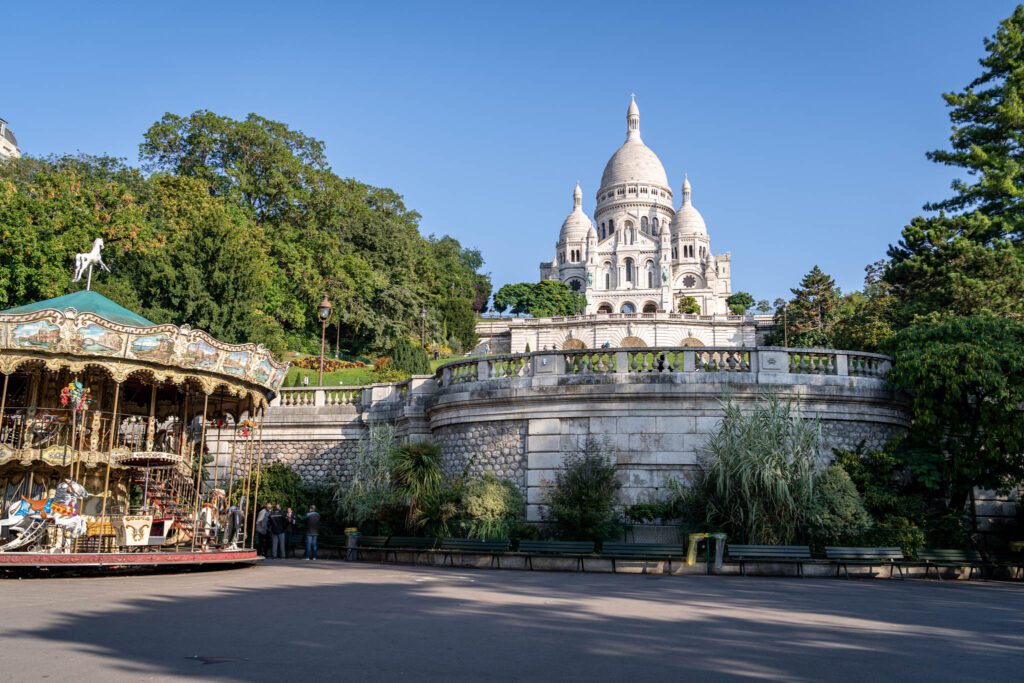
Learn Some French – A Little Goes a Long Way!
Don’t be put off by the myth that Parisians are rude and unaccommodating to tourists. As long as you greet everyone with a Bonjour and make sure to be polite, most locals we’ve encountered have been absolutely lovely. It will help if you learn a few important French phrases.
In our experience, people are always happier when you make an effort to use their own language. Not just in France, but just about everywhere in the world.
Here are some useful phrases to learn, and my attempt at phonetic spelling.
- Bonjour (bone – jure) – hello / good day
- S’il vous plaît (seal voo play) – please (“if you please”, literally)
- Merci (mare – see) – thank you
- Je voudrais (jeuh voo – dray) – I would like (this is the polite way of saying it, I think)
- Pardon – (par – do) – excuse me
- Excusez-moi (excuse – ay mwah ) – excuse me (different way to say it)
- Désolée (dez – oh – lay) – sorry
Here’s a more comprehensive guide to French phrases to learn, or you could pick up a small French phrasebook to help you learn French as you go.
Other Things to Know About Visiting Paris
Here are some other things to know going in that we jotted down on our latest trip. Some are useful, some are funny, some are good to know, and we hope that all of them will help you have a more enjoyable trip.
- Many shops and convenience stores are closed on Sundays so check hours in advance. Even grocery stores and other places you’d expect to be open if you’re coming from the US or Canada.
- Similarly, museums and places of interest typically have a day a week when they’re closed, but it’s not always the same. Check before you go.
- Paris is MASSIVE. We spent the first day or two trying to walk everywhere, and after multiple 30,000 step days decided to use the metro. With limited time, get acquainted with the metro and bus system, which will allow you to get around much more efficiently. We used this app for navigating the metro. It’s well worth investing in a Visite Pass, which gives you unlimited bus and metro rides (you only need zones 1-3, really).
- You’re still going to be doing a lot of walking on this itinerary, and you’ll need to watch where you step because there is dog poop everywhere.
- Wear comfortable shoes, and leave the heels at home. There’s a lot of cobblestones and uneven footing in Paris, and if you’re doing a lot of walking, you’ll want your feet to be comfortable.
- Everybody in Paris smokes. Or it seems that way to us. It has to be at least 50% of adults. Anytime you’re eating or drinking outside, there is almost guaranteed to be someone smoking nearby. Good to know going in.
- Tipping isn’t as much of a thing. Servers in Paris get paid a living wage – something we should probably consider in the US (don’t @ me with “but small businesses”) – so tipping is more about rewarding good service than a requirement so the server can pay rent. It’s still nice to give a 5-10% tip at sit-down restaurants with good service, and you won’t get a receipt with a tip line – either tip in cash, or tell them the final amount you want to pay before they run your card (e.g. if the bill is 50 Euros and you want to tip 5, tell them “55 Euros, s’il vous plaît).
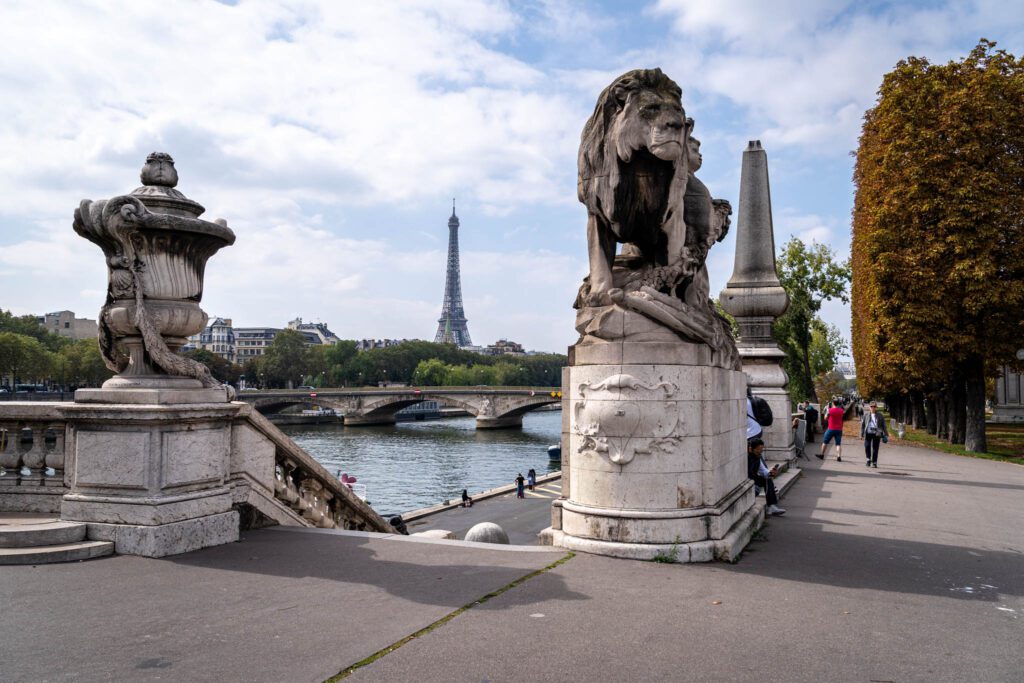
Our Version of a Perfect 4 Day Paris Itinerary
Paris truly has something for everyone. From history buffs to art lovers, to technology enthusiasts and those looking for architectural wonders, it’s all there. With so much to experience it’s definitely tempting to try to pack in all the sights, but then you’ll find you don’t have much time to “live like a Parisian”. And that would be a shame.
To make the most out of Paris, plan to do one or two major sights a day, and dedicate the rest to walking around the neighborhoods while leaving yourself energy to go out for a drink and some dancing or live entertainment in the evenings.
We’d recommend no more than two or three big museum visits during a 4 day trip to Paris, so you can fully enjoy them and retain the information.
Regardless of your interests, we think the Louvre will give the best all around experience of all the art and history you can take in over the course of four days. We recently did this tour of the Louvre at closing time, and really loved it. Read more about our experience here.
Aside from the Louvre, we’d recommend adding the Musée d’Orsay to view the best collection of impressionist art in the world, which had its heyday in Paris in the 19th Century (here’s a good essay on Impressionism and the historical context surrounding it).
One other personal recommendation would be the Rodin Museum, but we actually decided to exclude it from the 4 day itinerary below because it just doesn’t fit.
That’s how much there is to do and see in Paris – despite having four full days, we still didn’t find a good way to fit in what is probably our favorite museum in Paris. You’ll find our thoughts on it in the “More Time” section below, if you’re interested.
It’s nearly impossible to distill everything that Paris has to offer into just a few days of visiting, but the following itinerary tries to cover as much as possible without being overwhelming. Adjust the order depending on where you’re staying or what bookings you’re able to make while you’re there.
What to Book in Advance: In general, to make sure you’re actually able to make it to some of the top sights in Paris, we’d recommend booking 2-3 months in advance for the Louvre, Musée d’Orsay, the Eiffel Tower (if you want to go to the top), and Versailles. This is particularly important if you’re visiting over the summer, when we’ve seen crazy lines for some of Paris’ top sights, and it’s less important in the off-season (though we’d still book the Louvre in advance).
Here’s an overview of the 4 day itinerary you’ll find below:
- Day 1: The Left Bank, Saint-Germain, and the Eiffel Tower
- Day 2: Gothic Churches, A Food Tour, and the Louvre
- Day 3: The Coolest Neighborhoods in Paris (Montmartre, le Marais, Canal St. Martin, and Montorgueil)
- Day 4: A Day Trip to Versailles
Below the detailed itinerary, you’ll find some suggestions on what to do with more or less time on your trip to Paris, including options for compressing this itinerary into one, two, or three days.
Day 1: The Left Bank, Saint-Germain, and the Eiffel Tower
On your first day, start with a walking tour to get your bearings and learn tips and recommendations from a local guide, then make your way to the Left Bank, ending with sunset and an evening at the Eiffel Tower.
Important Note for the Day Ahead: We think the best way to experience the Eiffel Tower is with a picnic in the Champs de Mars, the park the tower calls home. Throughout the day, assemble materials for a picnic at the end of the day – bread, cheese, meats, wine, and whatever else catches your eye. Rue Cler, which is in the 7th Arrondissement right near the tower, is a great place for finding those kinds of things.

Start Your Trip with a Walking Tour
We always, always, always try to start our time in a new city with a walking tour. It does a couple of things for you that will set the rest of your trip up to be amazing.
- It usually includes a lot of the main attractions in a city (though Paris is big enough that you can’t possibly see them all in a couple of hours) and gives you the historical and cultural context around them. You likely won’t go into, say, the Louvre, but you’ll walk by and talk about it briefly. That way, you’ll have a nice overview and you’ll be able to decide what you want to come back to later.
- You’ll get a local’s perspective on the city, including things like what and where to eat and drink, how to get around, the best way to see the Louvre, and other super useful insider knowledge. Plus, you’ll get some valuable insight into Parisian culture that you’re really only going to be able to get by talking to a local.
- If you’re lucky, your tour guide will send you a list of restaurants, bars, things to do and see, and more at the end of your tour, which you can use to explore the city on your own later. We love getting our hands on those lists, and have used them extensively on our travels to discover places we definitely wouldn’t have found on our own.
On our most recent trips to Colombia and Europe (Portugal, France, Spain, and Italy), we’ve come to believe – strongly – that you should pay for a tour rather than take one of the many free tours that are offered in cities around the world.
The reason? The tour guide. Not to mention the fact that “free tours” aren’t actually free – the guides work for tips, which means you’ll be paying at the end of the tour one way or another.
There’s a huge difference between doing a walking tour with someone who has only lived in the city for a few years and a true local. On a free walking tour, there’s a higher chance you’re getting a student reciting a script rather than a local who’s giving you their point of view on their city.
There are exceptions to the rule that paid tours are better than free tours – it all comes down to the guide – but we strongly suggest paying for a tour.
This is the tour we’d recommend. Technically, it’s an electric bike tour. Paris is huge, and it would be nearly impossible to cover all the ground you need to on foot. This tour will give you an excellent overview of the city, and set you up nicely for the next few days of exploring Paris.
The alternative is either focusing on a specific neighborhood or area, like this tour of Le Marais, or focusing on a specific moment in history, like this French Revolution tour.
Saint-Germain and the Luxembourg Gardens

Grab lunch after your tour – probably in Saint-Germain (we’d recommend LouLou for more brunch-y fare, or Georgette for French food) – then make your way through the bougie paradise that is Saint-Germain en route to the Eiffel Tower.
Here’s a map of the rough route we’d take through Saint-Germain. There are a bunch of places to eat and drink along the way – Ladurée for macarons, Grom for gelato, and La Quincave for wine, to name a few.
Head over the 6th Arrondissement just across the street from the Le Bon Marché department store, a French institution dating back to the 19th century selling upmarket fashion, beauty, and gourmet food.
We love Les Grand Epiceries de Paris, a very bougie grocery store with all sorts of specialty food items – think a huge selection of artisanal breads, pastries, cheeses, etc – all under one roof.
Grab a coffee at the Ten Belles coffee shop on Rue du Cherche-Midi and then make your way to the Jardin du Luxembourg, where you can sit among the flowers and enjoy the sunshine.
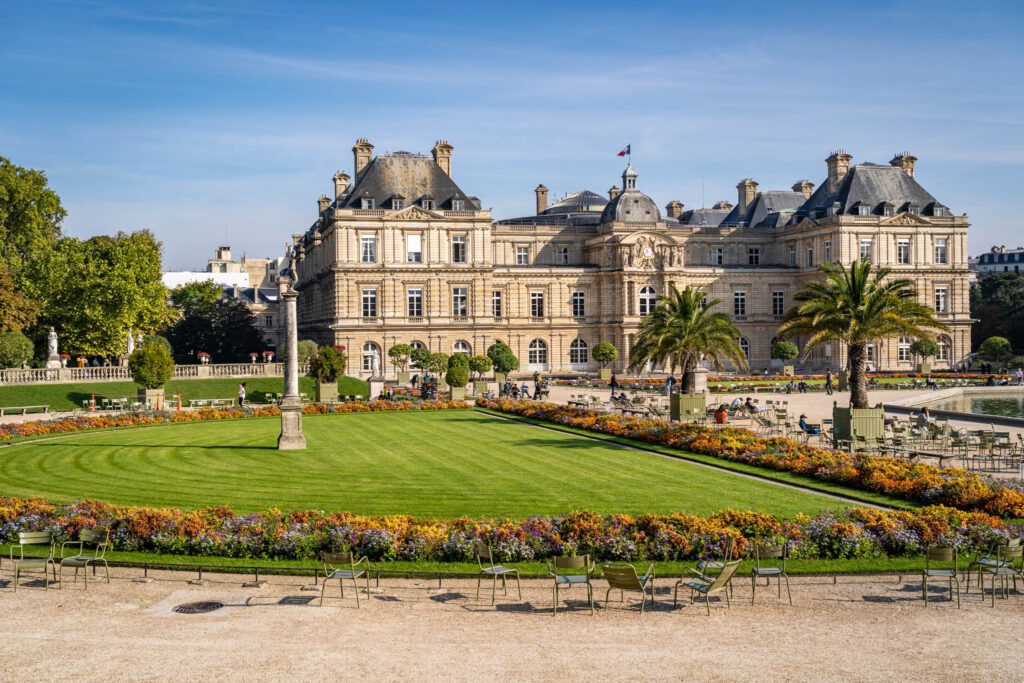
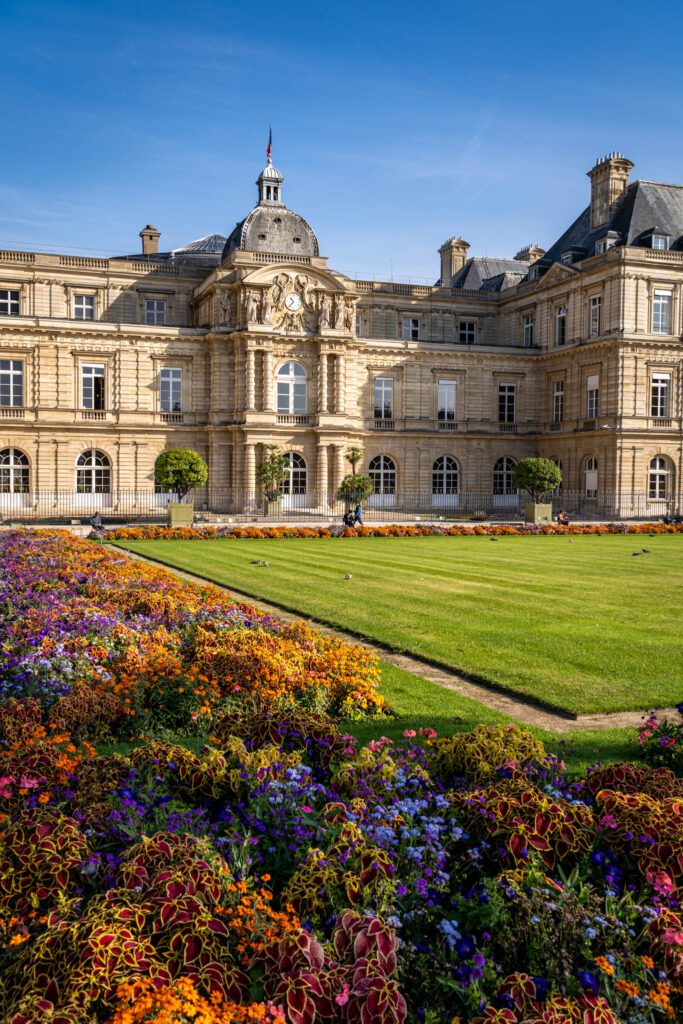
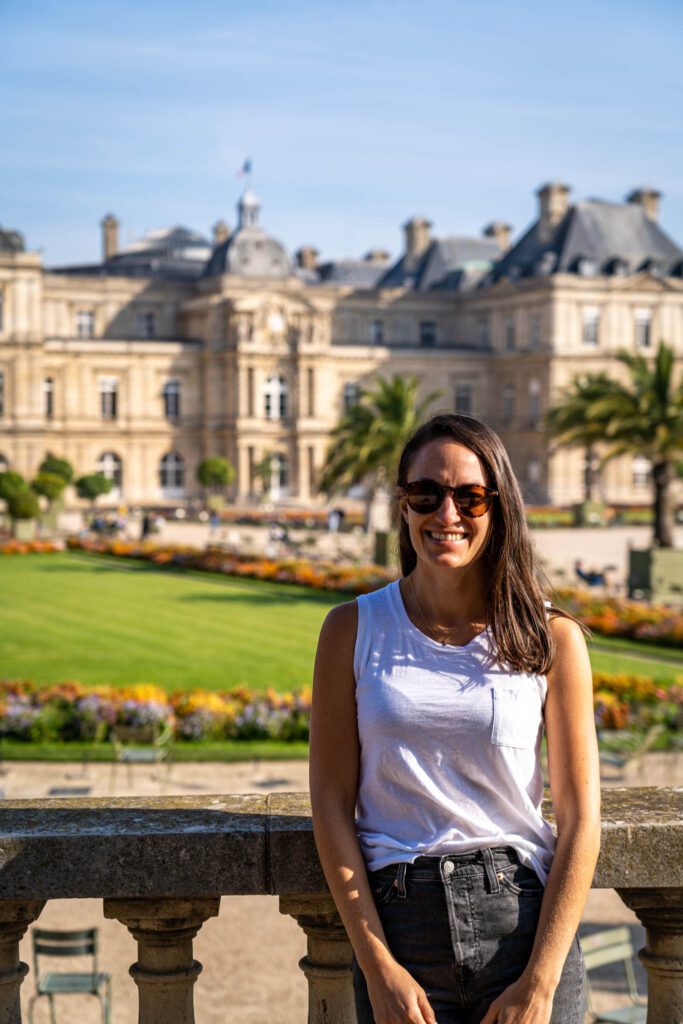
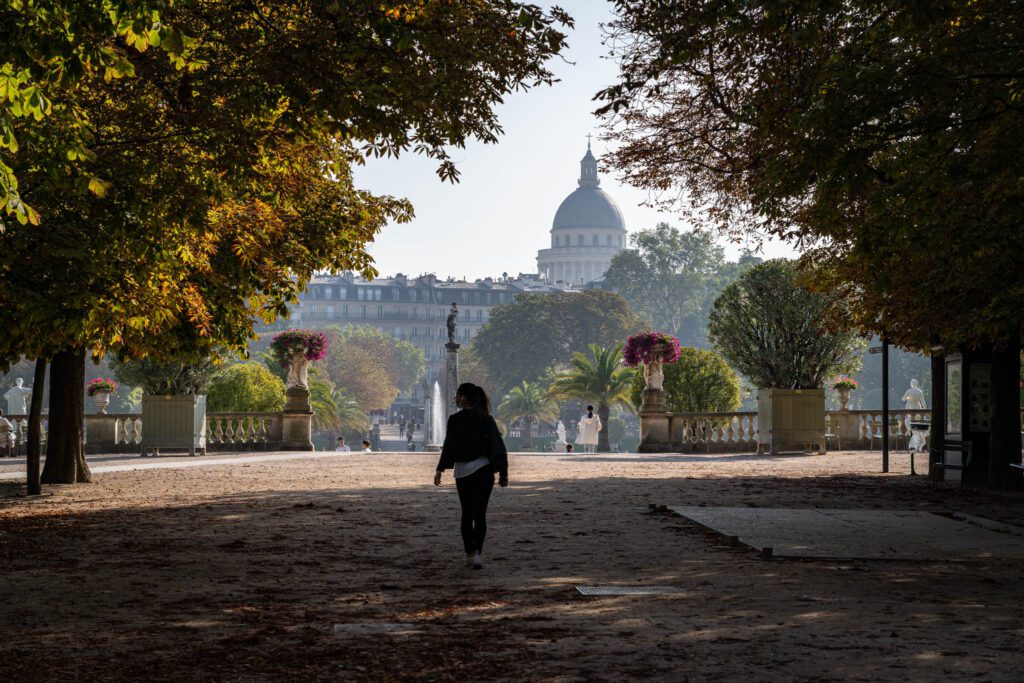
As you walk up towards Rue Bonaparte, you’ll pass the current Senate meeting place, the Palais du Luxembourg. Arrive at the Église Saint-Sulpice, best known today as one of the settings in The Da Vinci Code. The church took 150 years to build and has some beautiful frescoes by Delacroix inside.
Come back on Rue Bonaparte to reach Saint-Germain-des-Près, Paris’ oldest standing church built in the 11th century. From here, you can see the famous Café de Flore and Les Deux Magots, the cafes where artists, writers and socialites spent all their time at the beginning of the 20th century. Sit and have a coffee outside or look in at the gorgeous interiors, pretty much unchanged for over a century.
Continue your walk on the Boulevard Saint-Germain with an optional detour by La Dernière Goutte, to browse through an excellent selection of wines and grab a bottle for your evening picnic. Any cheese fan will find something they like at the Fromagerie Laurent Dubois, after which you’ll finish your self-guided walking tour at the charming Shakespeare and Company – the iconic new and used bookstore that’s been attracting book lovers since 1951.
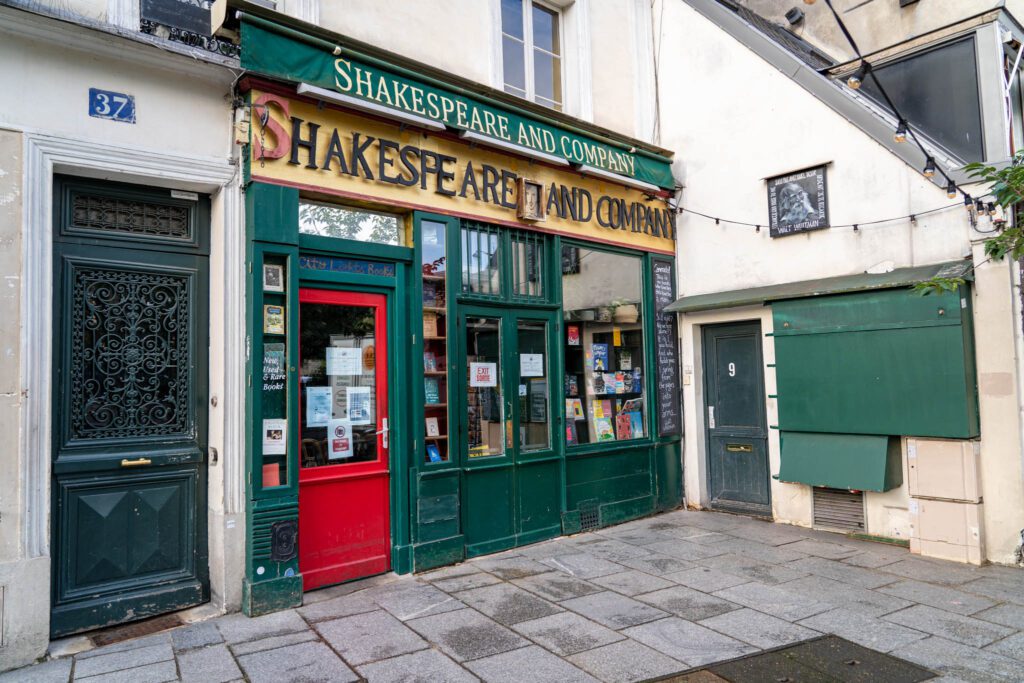
From there, walk west along the Seine to your next stop of the day, the best collection of Impressionist art in the world.
Musée d’Orsay
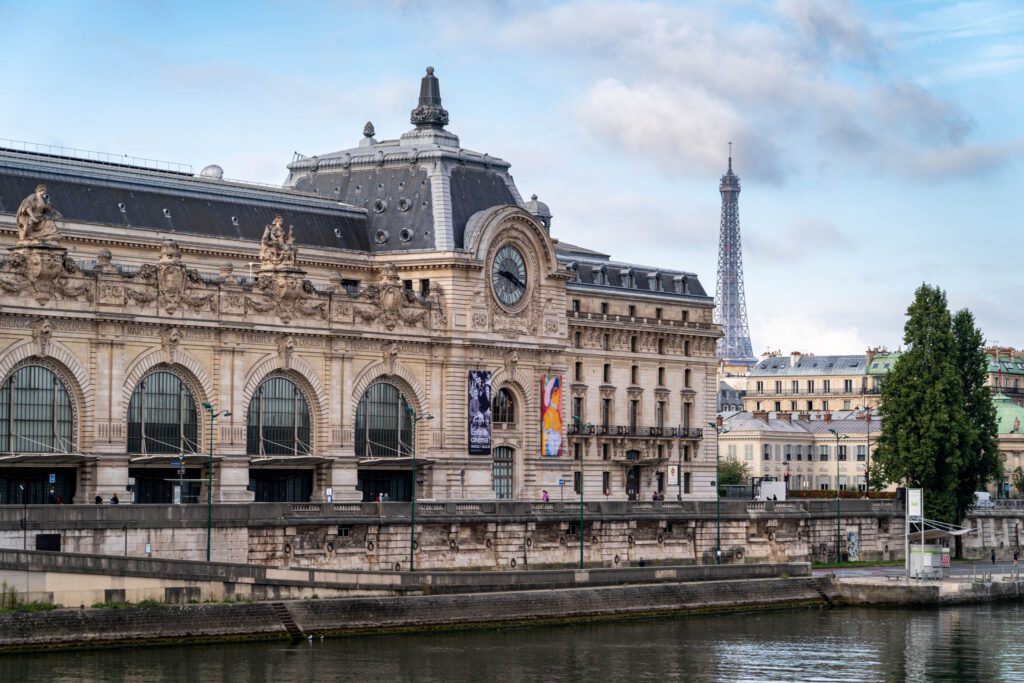
Since it’s your first day and you’re likely still getting your bearings, we’d recommend saving the Louvre for a different day and doing the Musée d’Orsay instead, which is one of the two museums we’d recommend visiting in Paris.
If you’re an art lover, this is the other big museum you must see in Paris aside from the Louvre (we also love the Rodin Museum, for what it’s worth, but it’s in the “more time” section because it’s one museum too many for us).
Not only is the Musée d’Orsay a beautiful building in an old railway station by the Seine, with stunning architecture from the 1800s, it also houses some of the best impressionist art. You’ll feast your eyes on Cézanne, Degas, Monet, and many others.
Your museum map will point out a few highlights, but make sure not to miss the Bal du Moulin de la Galette by Pierre-August Renoir with its energetic, lively atmosphere; Edouard Manet’s quizzical Olympia; Vincent Van Gogh’s Starry Night and Claude Monet’s Blue Water Lilies.
The Musée d’Orsay is a short walk across the Seine from the Louvre – take the Pont des Arts and check out all the couples’ padlocks tied to it. The regular opening hours are 9.30 am to 6:00 pm every day except Monday.
We always recommend a guided tour at art museums for the richer experience it provides. You’ll get the stories and context that bring the static pieces of art to life, and your guide will help you decide what to focus on in a sea of amazing art. More on this in the section on the Louvre below, which we’d DEFINITELY recommend a tour for.
Here’s the tour we’d recommend.
Though we haven’t done it ourselves, it checks all the boxes in terms of what we’re looking for – it’s led by an art history expert, it includes skip-the-line tickets to avoid spending hours standing in line at the ticket office (at least during the high season), and it gets great reviews.
If you only have the budget for a single guided tour, do the Louvre and do this one independently.
Details for Visiting Independently: The museum is closed Mondays, and open from 9:30 am to 6:00 pm Tuesday to Sunday (though it’s open late – until 9:45 pm – on Thursdays). Tickets are 16 Euros (13 Euros for reduced price tickets for students), and you can buy them in advance here. Which we’d recommend doing to avoid the lines at the ticket office.
Rue Cler
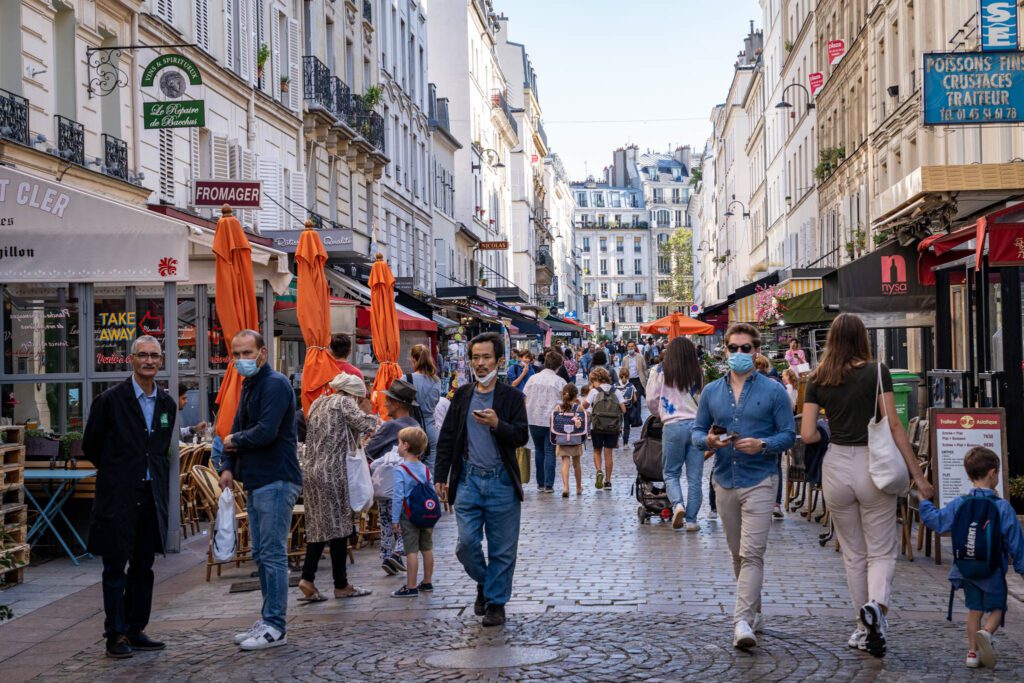
Finally, before the day is over, wander the mouthwatering Rue Cler and pick up the last items for your picnic. There’s another Amorino, or the Ladurée bakery with its world famous macarons, as well as a must visit shop for tea lovers: Mariage Frères makes exquisite blends, from the latest harvest of Darjeeling to a host of teas from Japan and beyond. You may need advice from the shop assistant.
The Eiffel Tower
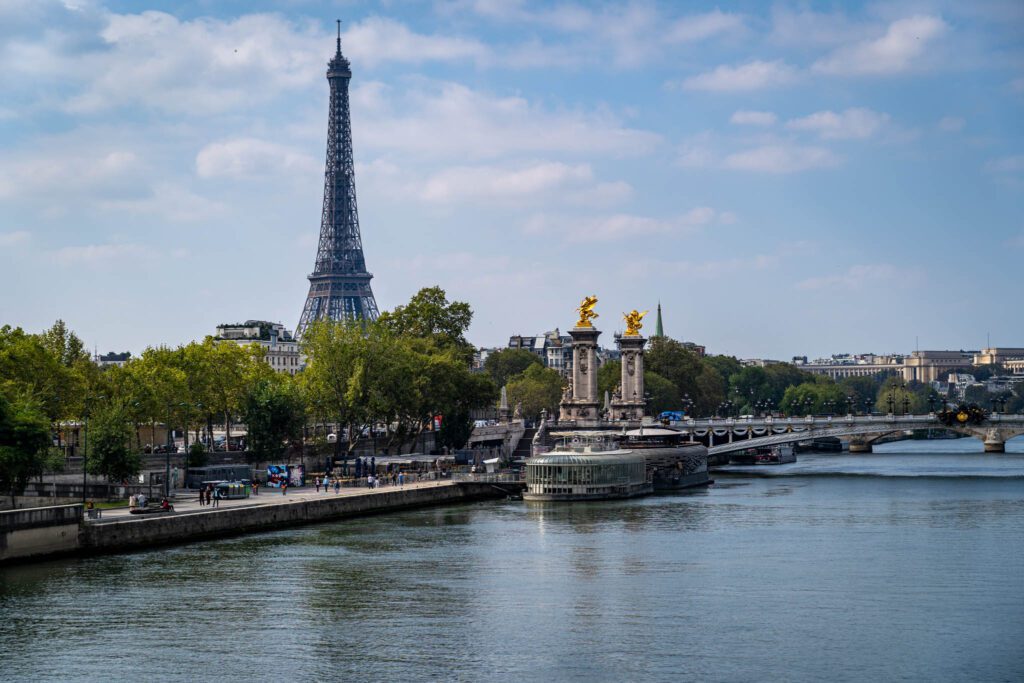
One of the most iconic images you’ll see during your 4 days in Paris, the Eiffel Tower can be glimpsed from all around central Paris, including beautiful views from the bridges across the Seine (the Pont d’Iéna links the Jardins du Trocadéro with the Champ de Mars where the tower stands) and from the Hôtel des Invalides (which is worth checking out during your walks around the city for its golden roofs and imposing stature).
Our favorite way to experience the Eiffel Tower is from the Champs de Mars, the park that the tower calls home. Particularly from the southeastern side of the tower, where there is a nice grassy area practically begging you to sprawl out for a picnic.
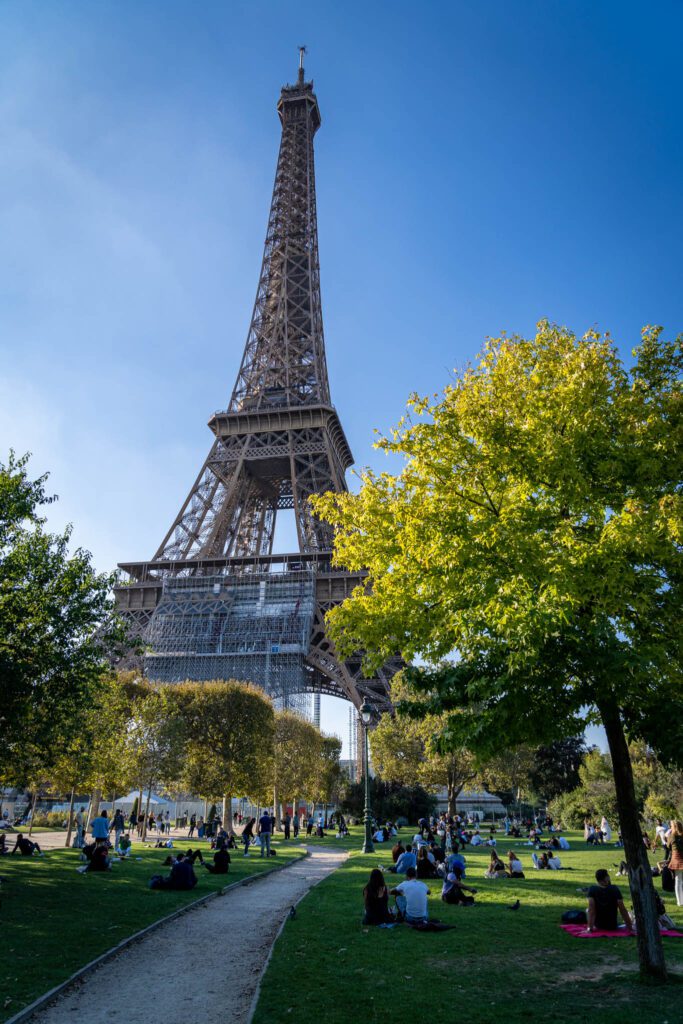
Lucky for you, you’ve just come from Rue Cler, which is one of the better areas to pick up picnic supplies. Assemble a collection of French cheeses, a baguette (or three), a bottle of wine (or sparkling water), and head to the Champs de Mars.
After your picnic, we’d also recommend heading over to the opposite side of the river for great views of the tower. In particular, there’s a great spot at river level with a pretty unbeatable view of the tower – it’s roughly here on Google Maps.
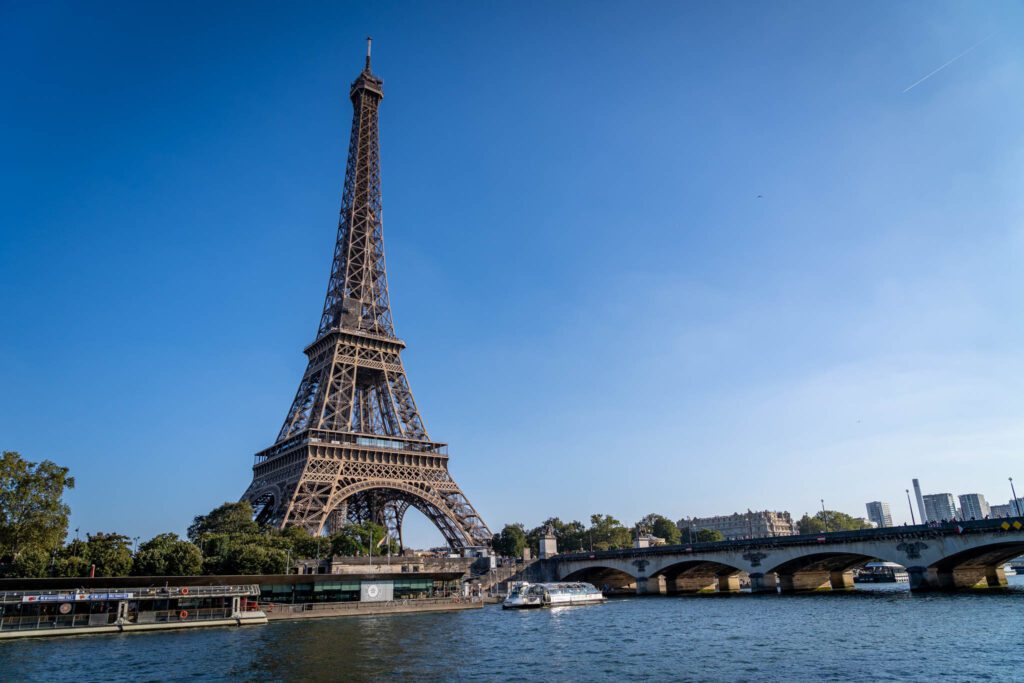
On a clear summer evening, it’s worth sitting in the Jardins du Trocadéro to enjoy the light show that takes place at the top of the hour every hour for five minutes.
Climbing the Eiffel Tower
If you want to get a postcard perfect view of Paris, we actually recommend going to the top of the Arc de Triomphe or the Tour Montparnasse, as the Eiffel Tower will then be included in the view. The problem with the view from the top of the Eiffel Tower is that, well, you can’t see the Eiffel Tower.
But, of course, the attraction of climbing it is irresistible. You have a few options to get to the top – you can take elevators to the second or third floor viewing decks, or tackle it on foot up to the second floor platform, which involves more than 1,500 steps in total.
You’ll need to get tickets either way and we recommend booking skip-the-line tickets online to avoid huge lines.
Day 2: Gothic Churches, A Food Tour, and the Louvre
On your second day in Paris, start by visiting two of the most impressive Gothic churches in the world before diving into the food culture of Paris with either a cooking/baking class, or a food tour to try some of Paris’ best eats according to locals.
Then, once you’re nice and fueled up, spend the afternoon and early evening at the Louvre, exploring one of the greatest art collections in the world. Ideally, with a guided tour.
Notre Dame and Sainte-Chappelle
Start your day relatively early to make it to two of the best examples of Gothic architecture in Paris. Both happen to be churches.
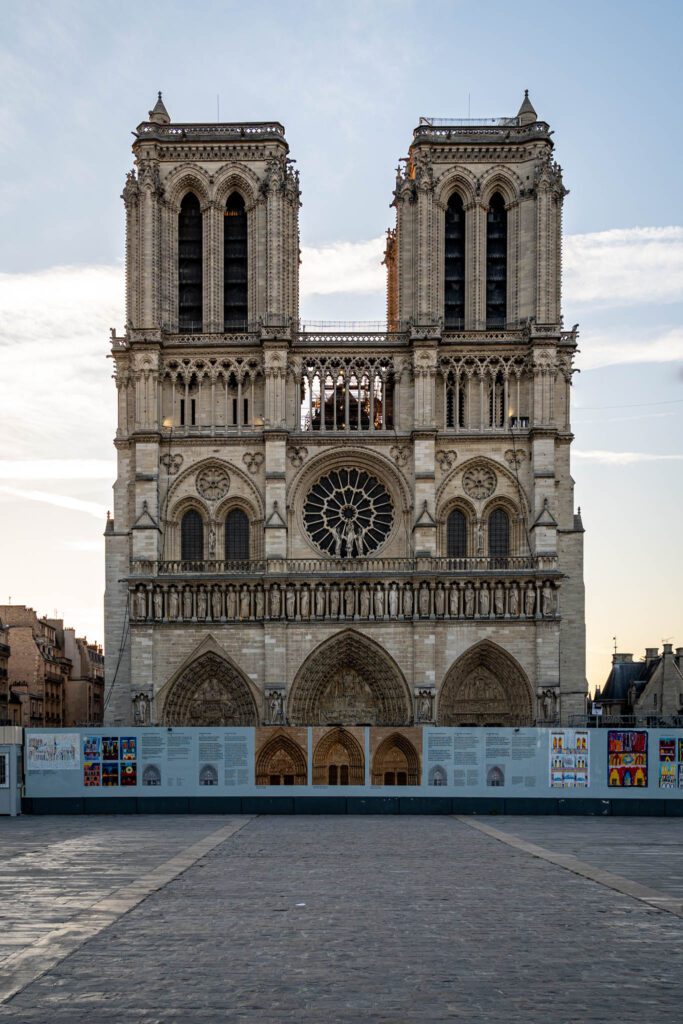

For medieval art lovers and those looking to stroll through some of the most romantic church aisles, you cannot miss the Notre Dame Cathedral. Depending on how much detail you want to take in, you can walk through relatively quickly, admiring the gothic arches and the beautiful stained glass windows. Climb up to the tower for gorgeous views.
Important Update: Unfortunately, the cathedral is currently closed following the fire that broke out in April 2019, but you can still admire it as you pass by.
If you’re in Paris on a sunny day and have a couple of hours to spare marveling at some of the best stained glass windows in the world, then we wholeheartedly recommend Sainte-Chappelle.
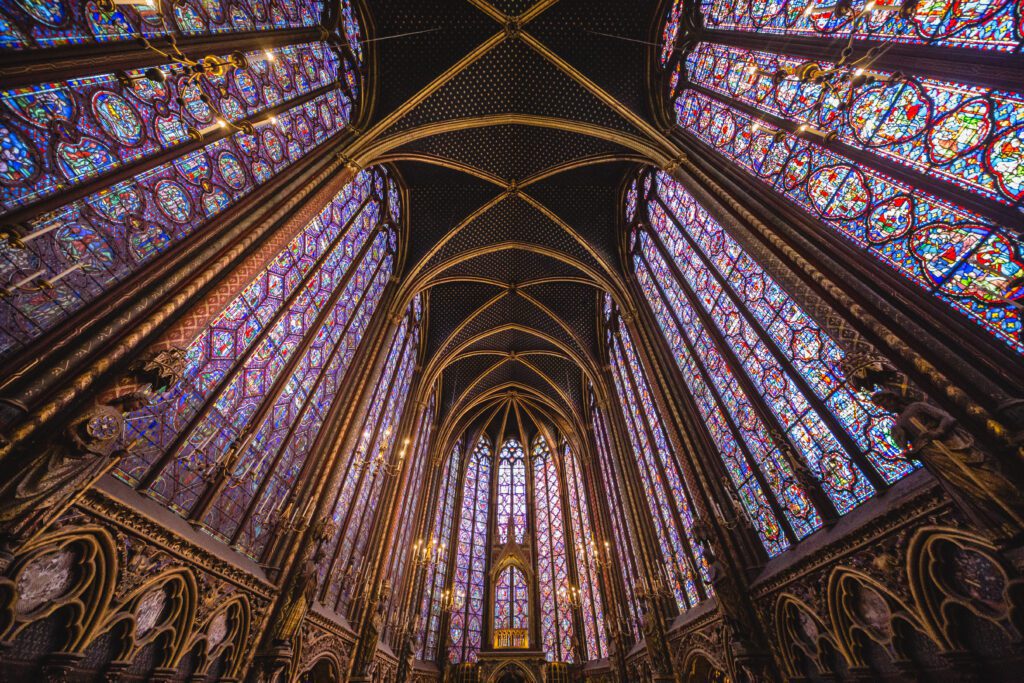
You can find this small gem of a church within the Palais de Justice, just a few blocks away. It’s a small, maybe not particularly imposing building from the outside, but the real spectacle can be found inside the chapel. It is considered Paris’ most exquisite Gothic monument and well worth a detour.
Choose Your Own Foodie Adventure
Diving into the food culture in places we’re visiting is one of our favorite aspects of traveling, and we try to include a food tour, cooking class, or market tour in most places we visit.
Unfortunately, the reality is that because Matt has Celiac Disease and can’t have even a speck of gluten without being sick for days, a food tour or cooking class wasn’t in the cards for us in Paris.
HOWEVER. That does NOT mean it shouldn’t be for you! We’d highly recommend it because it gives you a local’s perspective on the city’s food scene – what and where to eat and drink – and you get to connect with fellow travelers and try some amazing food.
Here are some options for you, split between food tours and cooking classes. Our bias is to do a cooking class, because we LOVE to cook, but we also enjoy a good food tour.
Option 1: Dive Into French Cuisine in a Cooking Class
We’ve done all sorts of cooking classes around the world (read about our cooking class in Mexico City here), and while the gluten-filled nature of most French food made it nearly impossible to find one in Paris that meets our needs, that doesn’t mean you shouldn’t.
After all, haven’t you always wondered how to make the perfect croissant? Spoiler: you’re probably not going to want to do it more than once.
Here are a few cooking classes that would definitely be on our list if, you know, Matt could eat gluten. All three of them are baking classes – because Paris is known for pastries – with Matthieu, a French chef who has a nice space in the heart of Saint-Germain (the 6th Arrondissement).
Learn to Make Macarons: Exactly what the title sounds like – learn how to bake macarons from start to finish, and walk away with your very own box of 15-18 to devour later.
Learn to Make Croissants: Croissants might be the most iconic French pastry… and also the biggest headache to make. Where better to learn to make croissants than with the help of a real chef?
Learn to Make Baguettes: The famous french form of bread, you’re likely to see at least seven Parisians walking to and fro with a baguette in their hands during your time in Paris. Learn how to make a perfect French baguette, then enjoy the fruits of your labor by pairing it with a variety of local items.
Option 2: Learn About Food Culture Through a Food Tour
Here are some food tours that caught our eye though, sadly, we also skipped these because of the whole gluten and cross-contact issue.
Mingle at the Market – Taste Paris: This is part market tour, part tasting. You’ll meet at a local market over in the 11th Arrondissement and learn about Parisian food culture through experiencing the market and tasting a selection of foods at different stalls. It’s a small group with a maximum of six guests, so you’ll have plenty of time and space to ask questions and really learn about Paris through the eyes of Natasha, the host, and her team.
NO DIET CLUB: First of all, their website starts with “Bye Boring Food Tours” and has a hilarious logo of a woman in a bikini riding a hot dog with a stein of beer and her middle finger up. But what about their tours? They have several tours in Paris where they take you around to their favorite spots in a specific neighborhood, which is the style we’d recommend. The tours last between three and four hours, and you need to show up hungry otherwise you’ll lose steam halfway through. They have lunchtime tours in le Marais and Canal St. Martin, and an evening tour in Montmartre. If we had to choose, Canal St. Martin would be our pick.
The Louvre

At the Louvre, you’ll encounter the best and most eclectic art collection of your trip. The museum is worth spending at least three hours in, even if you just plan on ticking off a few highlights. The vast palace started as a fortress in the early 13th century, becoming a national museum in 1793.
The exquisite collection was built by subsequent French governments, sometimes controversially, bringing in art from all over Europe, as well as Assyrian, Etruscan, Greek, Coptic and Islamic art and antiquities.
Make sure you check out the Mona Lisa, the Victory of Samothrace (or Winged Victory), the Venus de Milo and the moving paintings The Raft of the Medusa by Théodore Géricault and Liberty Leading the People by Eugène Delacroix (the famous scene you’ll have seen of the symbol of the Republic, Marianne).
Ask just about anyone to name the best art museum in the world, and those who have had the privilege of visiting Paris will likely say the Louvre without much hesitation. We like the Prado Museum in Madrid and the Uffizi Gallery in Florence too, but there’s no doubt in my mind that the Louvre has the most impressive and comprehensive art collection in the world, at least that I’ve ever seen.
Which is… a bit of a problem. The Louvre is massive. There’s plenty of art to keep you busy for multiple days. And it’s from all different periods of history, too, spanning thousands of years. So how do you choose what to focus on?
A Note on Timing: The afternoon is generally the best time to visit the Louvre for slightly more manageable crowds. The late afternoon / early evening will give you a marginally more peaceful experience, which is why we’ve organized the itinerary in this particular way.
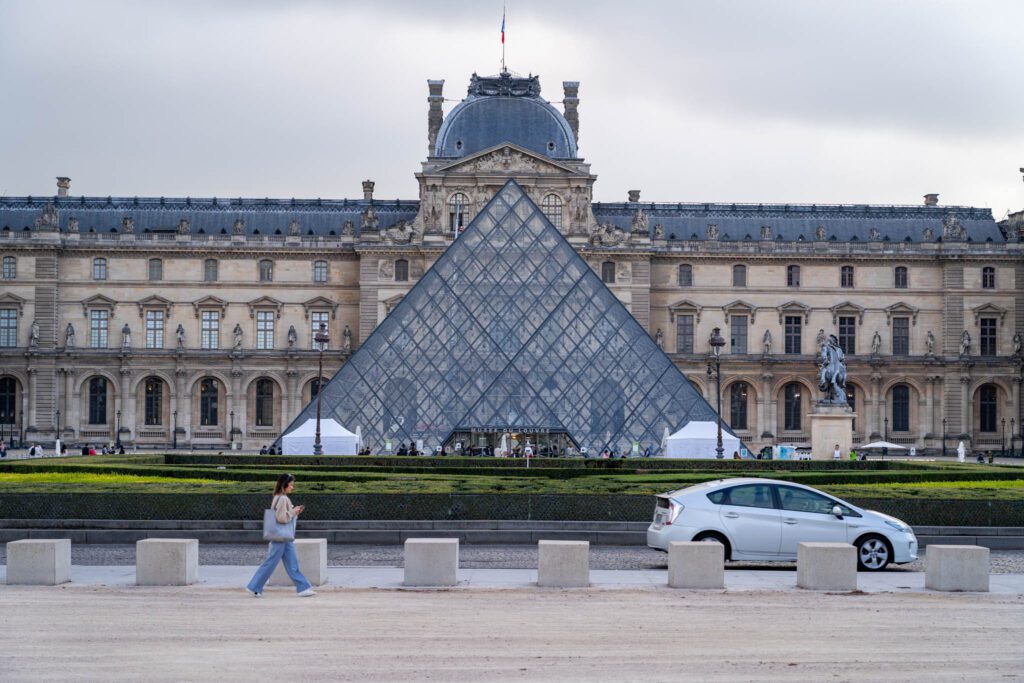
Invest in a Guided Tour of the Louvre
On our three month European adventure that took us to Italy, Spain, Portugal, and Paris, we had the chance to see multiple famous art museums.
We quickly realized that we’re just not really art museum people. But after a tour of the Uffizi Gallery in Florence, I had an epiphany as to why.
Walking around an art museum and looking at pretty paintings is cool and all, but the real pleasure is when you actually understand the story behind each work of art, and the role they played in history and the progression of art history. Which, as two normal people, is something we don’t really have in our repertoire.
We highly, highly recommend investing in a guided tour of the Louvre (we love Take Walks, and we’ve done multiple tours with them in Europe – read about our Colosseum Tour with them, which was amazing). If you’ve only got the time or budget for a single guided tour in Paris, this should be your choice.
We’ve both done it independently – Matt multiple times – and have come to realize that unless you’re an art historian, it’s really, really hard to visit a huge art museum independently and come away with much else than “well that was pretty” or “whoa, they have so much art!”
A guided tour with an art historian is going to give you the context and stories behind each work of art, which are the things that really bring the experience to life. Plus, arguably more importantly, they’re going to help you understand the important pieces and periods to focus on.
We opted to skip the Louvre on our latest trip, but we absolutely would have taken a guided tour if we were planning on doing it. Here are three tour options we’d recommend (they were on our list until we decided to skip it).
We love the “Closing Time at the Louvre” by Take Walks, which aims to take you through the top sights at the least busy times. Starting at 6:45 pm, this is the most peaceful way to visit the museum, although it means adjusting your itinerary to suit.
Another great tour option is the Semi-Private Louvre Highlights Tour, which will include a visit to the Mona Lisa, the French Romantics, top Italian artworks and the Crown Jewels. It only takes two hours but you won’t have to wait in line or wander the halls in search of your favorite painting. Once the tour is over, you can spend the next couple hours delving into the areas that have caught your eye.
Visiting the Louvre Independently
If you plan to go on your own, the Louvre is open daily except Tuesday, from 9:00 am to 6:00 pm, with the exception of January 1, May 1 and December 25.
We suggest booking tickets online, costing 17 Euros, as you might not find any at the museum (although they will be a tiny bit cheaper at 15 Euros).
If you’re not doing a tour, it’s worth investing in the audioguide to give you at least a little bit more of the context around each piece of art. It’s not nearly as good as a live guide, but it’s better than nothing
Rive Droite: A Walk on Paris’ Right Bank

As the Seine splits Paris across the middle, it sections it into the Rive Gauche (Left Bank) and Rive Droite (Right Bank). Explore the latter if you have energy left after your time at the Louvre, and we’d recommend walking from there to the Arc de Triomphe.
- The Jardin du Palais Royal – A beautiful garden in the heart of the city, built around the 17th century Royal Palace. A great place to stop and smell the roses (literally!).
- Head on to the Tuileries Gardens, where Parisians enjoy sitting on the lounge chairs by the fountains or taking walks with their friends. Cross it from the Louvre to the Place de la Concorde to end up in the wide square with the Obelisk (it is 3,300 years old and engraved with Egyptian hieroglyphics).
- Carrying on along the Seine you’ll find the Grand Palais – built for the 1900 World’s Fair, it is home to several exhibitions. Check out the amazing 8.5-ton art nouveau glass roof!
- Finish your walk on the Champs-Élysées, strolling towards the Arc de Triomphe.
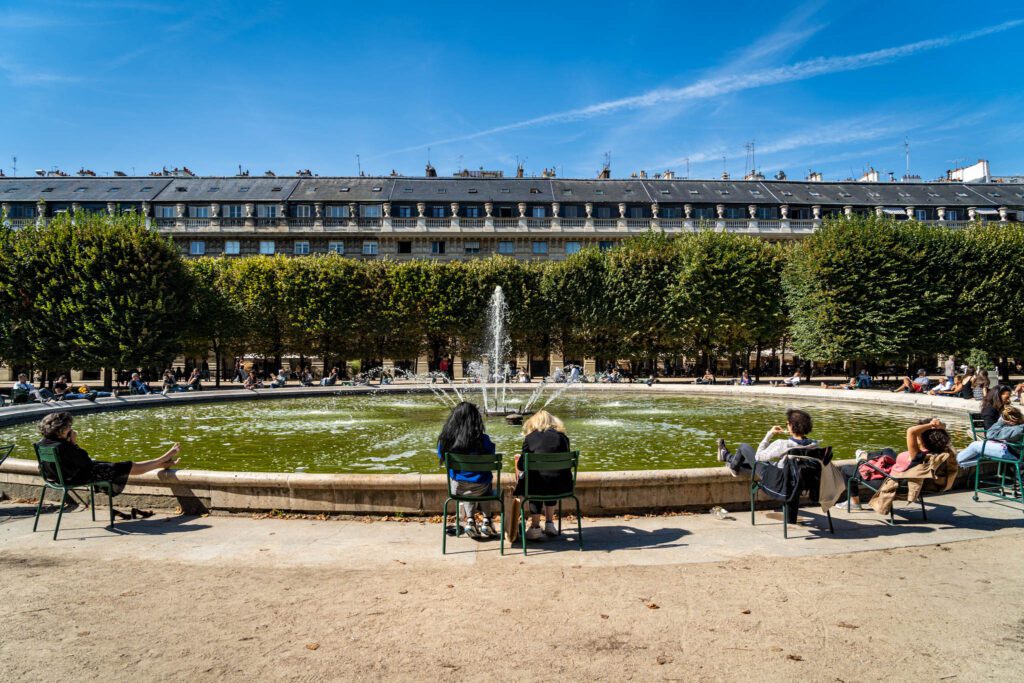
The Arc de Triomphe and the Champs-Élysées
Close out your day in Paris with a trip to the top of the Arc de Triomphe, which was built by Napoleon in the early 19th Century to commemorate a victory at Austerlitz. Napoleon LOVED his triumphal arches.
A quick side note: If you’re interested in Napoleonic history, I have a recommendation for you. At the beginning of our latest three month trip to Europe that took us to Spain, Portugal, and Italy, we heard Napoleon’s name over and over, and to be honest, the only things I really knew about him were that he was short and spoke French in a funny way (because he wasn’t a native speaker – he was Corsican).
So, to learn about the man who shaped modern Europe in many ways, I started this podcast about Napoleon, and love it. It’s a deep dive into Napoleon’s life and impact on Europe during his brief stint at the top.
Now back to your regularly scheduled programming.
The Champs-Élysées are pretty “meh” for us – it’s lined with the exact same kinds of shops and stores you’d see anywhere else in the world, and it really isn’t all that charming or interesting.
Continue all the way up to the Place de l’Étoile, where you’ll be looking up at the Arc from below.
From the Place de l’Étoile (now known more commonly as Place Charles de Gaulle), looking up, you’re bound to be charmed by the Arc de Triomphe. The height of Hausmannian architecture and city planning is on display here: from the star-shaped arrangement of tree-lined boulevards to the elegant buildings.

We recommend crossing the busy roundabout to have a look at the monument and climb the 284 steps to the viewing platform at the top, from where you can see the avenues in their full splendor.
The view from the top is worth the effort, and it’s one of the best views in Paris. We think it’s better than the Eiffel Tower because it includes… the Eiffel Tower. Go around sunset for soft golden light washing over the sprawling city, and stay for a bit when the lights come on, and you’ll understand how Paris got the nickname “City of Lights.”
The Arc de Triomphe can be reached through an underpass from the northern side of the Champs-Élysées, bringing you to just underneath the arch. You can buy tickets to the viewing platform in the tunnel (though you should buy them in advance to skip past the sometimes long lines at the ticket office).
Costs & Hours: You can buy tickets in advance on the official website, which we’d recommend to avoid the long line. Admission costs 13 Euros for adults, but there are a long list of people who can get in for free, including people under 18 and E.U. citizens between the ages of 18 and 25 (be prepared to show proof!). More information on opening hours, costs, and other practical information here.
Day 3: Explore the Coolest Neighborhoods in Paris
Today, there are no tourist attractions (in the traditional sense) on the agenda. Instead, we’d recommend a long self-guided walk from west to east (roughly) through the Rive Droite and some of Paris’ most interesting neighborhoods.
Those neighborhoods are Montmartre, the gem atop the hill where you’ll find Sacré-Cœur and charming cobblestone streets, Le Marais, Canal St. Martin, and Montorgueil. The latter two are our new favorite areas in Paris after our recent trip.
A Morning in Montmartre
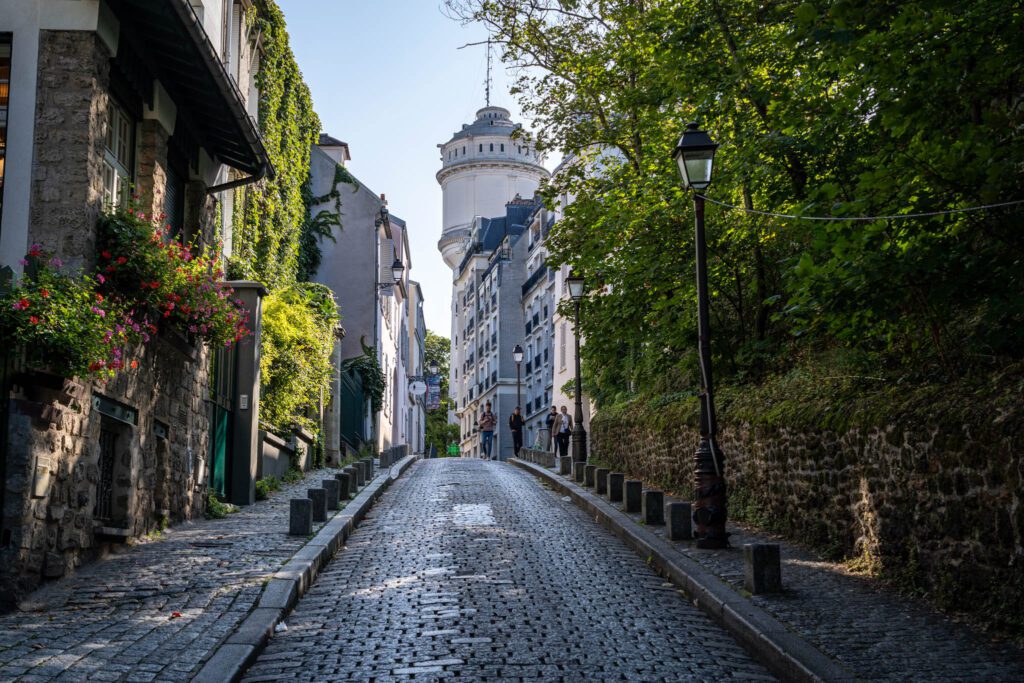
A lot of guides – both books and travel blogs – will recommend Montmartre as an afternoon/evening destination. It’s easy to understand why – the view at sunset is sublime (at sunrise, you’re looking into the sun from Sacré-Cœur), the romantic vibes come out after dark, and the neighborhood comes alive with people.
We actually preferred Montmartre in the morning, before the crowds of people showed up. Which is why we have you here at the beginning of the day instead of the end.
Start your day at KB Coffee Roasters, who have two things going for them. One, their patio on a cute square – complete with a carousel, which in my mind is a quintessentially Parisian phenomenon – at the base of Montmartre is an exceedingly pleasant place to sip your morning coffee in the Parisian sun. Two, their coffee is damn good.

From there, make your way up the hill to the crest of Montmartre. You can either take the steep stairs that will take you straight up the hill, or meander up the winding cobblestone streets. At the top of the hill is the white church on the hill – Sacré-Cœur – which boasts one of my favorite views in Paris.
One Thing to Know: There will be people waiting at the base of the hill up to the church trying to sell you all sorts of things, but the most common is a scam where the person puts a bracelet on your wrist (without you asking for it) and then asks you to pay for it. A firm no thank you usually does the trick.
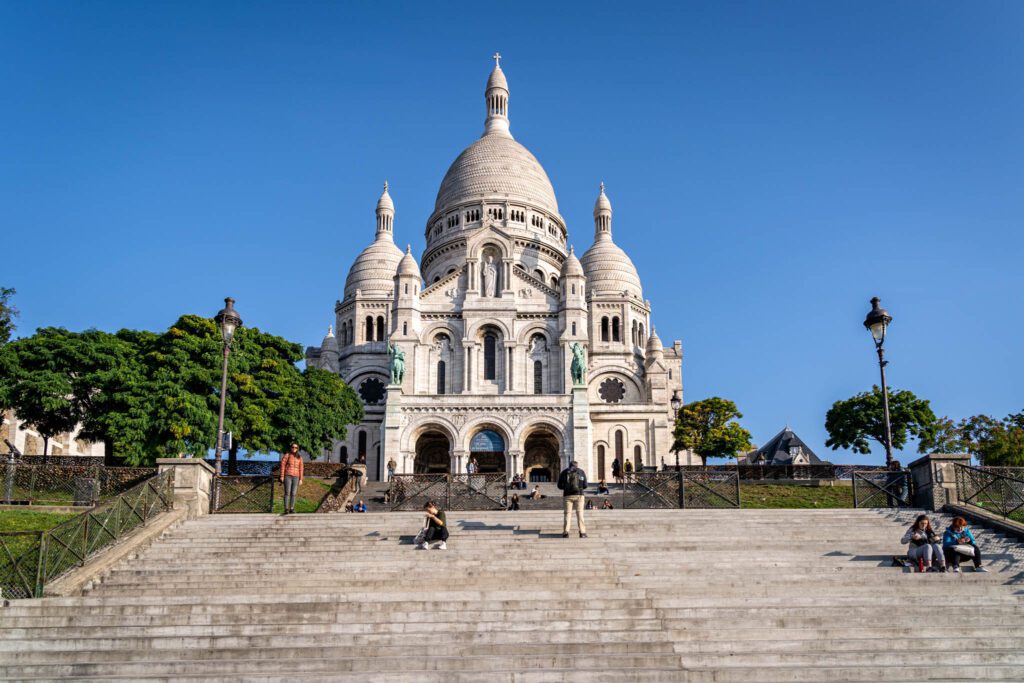

At the top, admire both Sacré-Cœur itself, and the view from the platform just below it, which looks back towards the Seine and the center of Paris. You can also climb the tower of Sacré-Cœur for even better views – it’s 200+ steps, and like most church towers, they’re narrow and claustrophobic.
After Sacré-Cœur, make your way back down the hill, this time taking your time to wander a little bit. Here’s the route we’d suggest, which takes you past the only winery in Paris, one of the oldest restaurants in Paris (La Maison Rose), and along some of the most romantic streets in Paris.
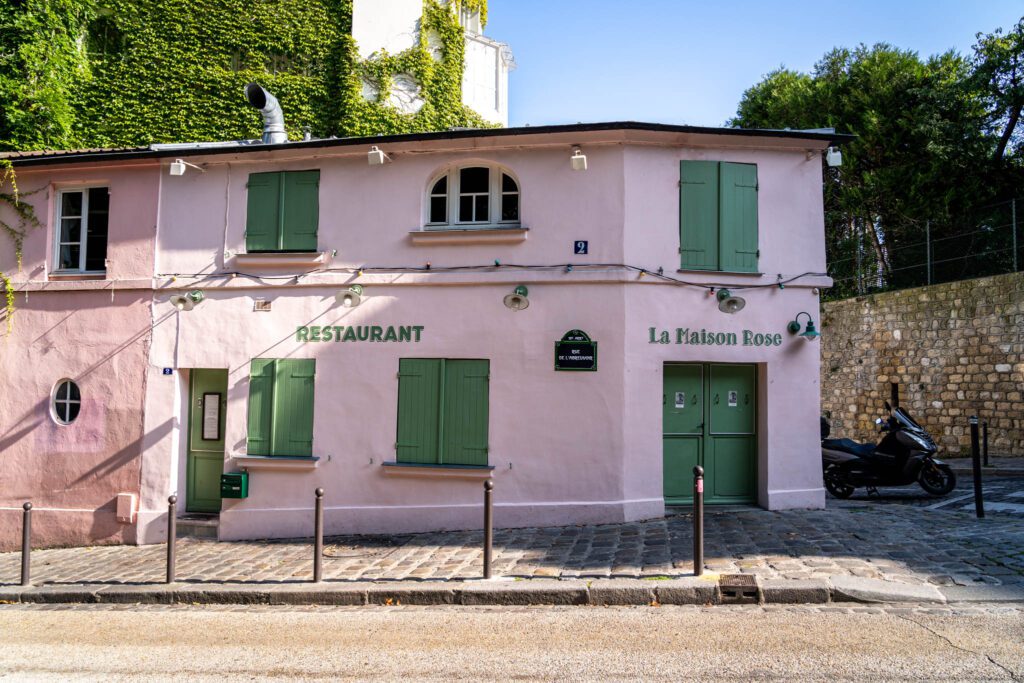
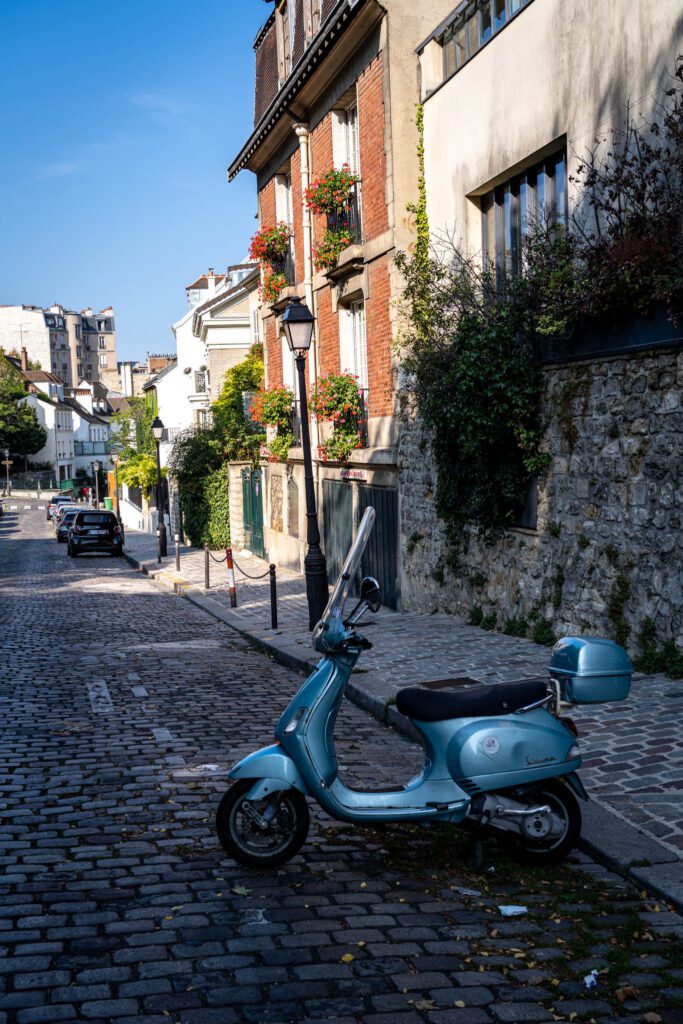


End with a stroll down Rue des Abbesses, which is the bustling hub of activity in Montmartre. It’s lined with shops and restaurants, and is worth a walk through.
To get to your next stop – Le Marais – it would be best to take the Metro from Pigalle (here on Google Maps) to Bastille (here on Google Maps). See the “Getting Around” section below for the best way to use the Paris Metro, which is super efficient.
Le Marais

Le Marais literally means “marsh” – it was converted to farmland in the 12th century and became a fashionable district in the early 17th century when Henry IV built the Place Royale (now the Place des Vosges).
It is now full of funky bars and restaurants, as well as home to many designer boutiques.
The most fashionable area is moving slowly north, with Haut Marais (upper Marais) now commanding the attention of rising talent with vintage fashion and hip places to eat.
A Self-Guided Walking Tour of Le Marais
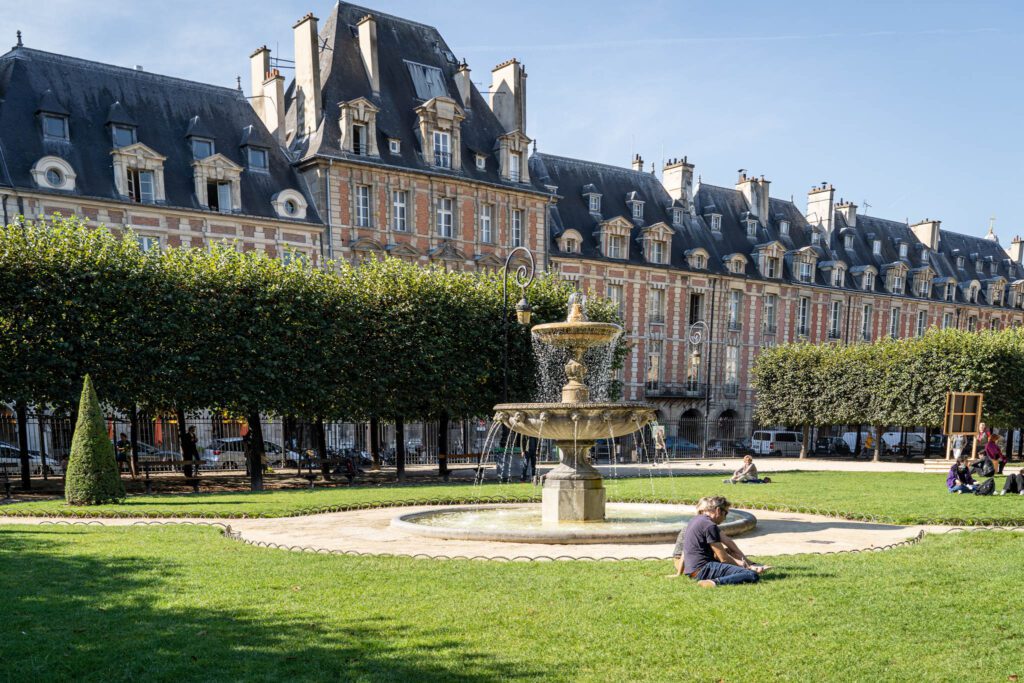
Take this self-guided walking tour to see the best of the Marais.
Start at Place de la Bastille, which as you might have guessed is where the storming of the Bastille took place, igniting the French Revolution in 1789.
From there, make your way through the 3rd Arrondissement, which is much more busy and commercial than the 4th Arrondissement, which is where you’ll end your tour. Here are the stops to make along the way.
- Place des Vosges: One of Paris’ best green spaces, we came here mid-morning and found it full of school children doing laps around the fountain in the middle, and people soaking up the sun with a good book. It’s impeccably manicured, and chances are good that you’ve seen pictures of it before. Victor Hugo’s house is at the southeastern corner of the square. You can visit to see the reconstruction of his apartment with authentic furniture, and a collection of sketches and other pieces from his life. More info here.
- Next up, stroll down the Rue de Rosiers past some favorite take out places of Parisians, such as L’As du Falafel, through the Jewish quarter and on to where the Rue de Rivoli turns into Rue Saint-Antoine and you enter the very hip area of La Bastille. Check out the Fromagerie Laurent Dubois for an exquisite cheese collection!
- Along the way, you’ll pass the quaint shop of Nature et Découvertes on the Rue Sainte-Croix de la Bretonnerie. Browse the shelves for cute trinkets before carrying on.
- Head north on Rue Vieille du Temple, one of the oldest streets in Paris, and poke your head into the Jardin des Archives Nationales, another of the neighborhood’s amazing green spaces. Follow the old cobblestone street north, and turn left to arrive at the famous covered market, the Marché les Enfants Rouges.
End your little meander in the Marais at the Marché les Enfants Rouges, a 1615 covered market that is the oldest market in the city, full of any food you might crave at lunchtime. This is an excellent place to have lunch.


A good alternative would be Breizh Cafe, which is the place to go if you’re craving a crêpe. They have sweet crêpes and savory galettes, traditionally made with buckwheat flour, along with French cider, which is definitely worth a try. They have a bunch of locations in Paris, including one a few blocks south of the market on Rue Vieille du Temple (here on Google Maps).
Around the market, you’ll find the hippest part of Le Marais. This is the 4th Arrondissement, and it’s always bustling with activity. There are some fantastic green spaces – like the Square du Temple – Elie Wiesel (here on Google Maps) – and the area immediately east of the Marché les Enfants Rouges is a collection of some of the coolest bars, restaurants, stores, and coffee shops in Paris.
We’d recommend Candelaria for agave-based cocktails and Mexican food, Fringe Coffee for a rotating list of coffee roasters from all over Europe, and La Maison de Mochi for mochi-based treats (NOT GLUTEN FREE, SADLY).
Canal St. Martin
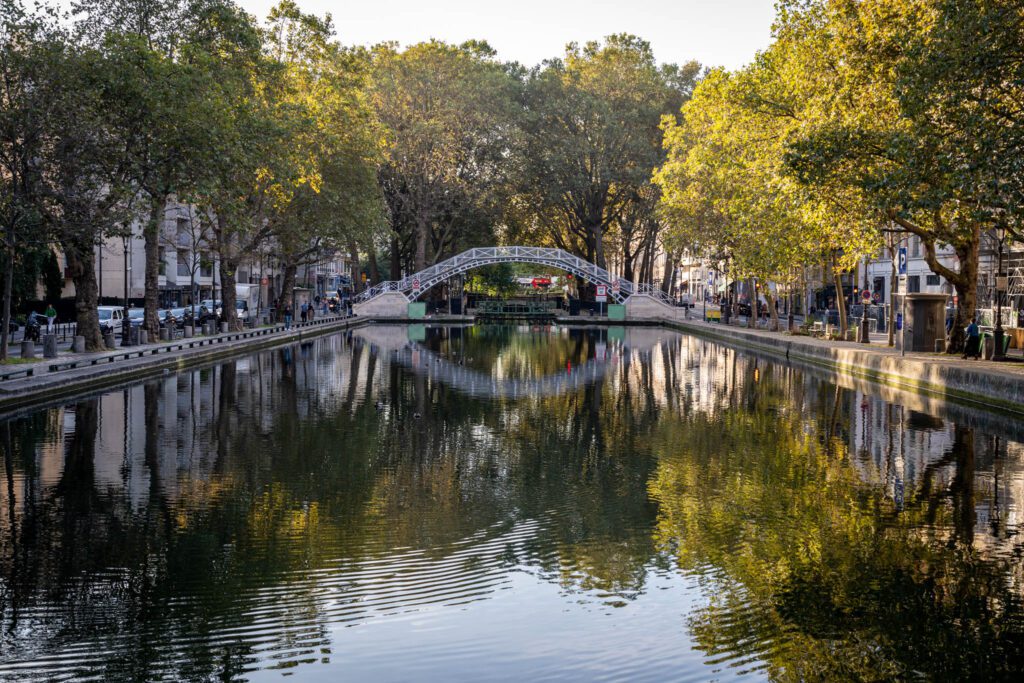
Canal St. Martin is one of our new favorite neighborhoods in Paris, and it’s partially because it feels like Parisians actually live there. There are young families walking along the canal, young couples
From the 4th Arrondissement, it’s an easy walk to get to the canal, which is in the 10th Arrondissement, northeast of where you end your tour of Le Marais.
We’d recommend doing a big loop around the canal, stopping along the way for food, drinks, and whatever else your heart desires. Here are some other places along the canal that we enjoyed.
One place we LOVED was La Cidrerie. We’re suckers for cider, and La Cidrerie is the place to go to try different kinds of French cider. We showed up around opening time, and chatted with the owner as he poured us a few different kinds of French Cider.
They even had one of our favorite American ciders on tap – the Chile Guava from Stem Ciders in Denver – which was a fun surprise! If you want to try French cider along with a collection of ciders from around the world, we’d highly recommend it.
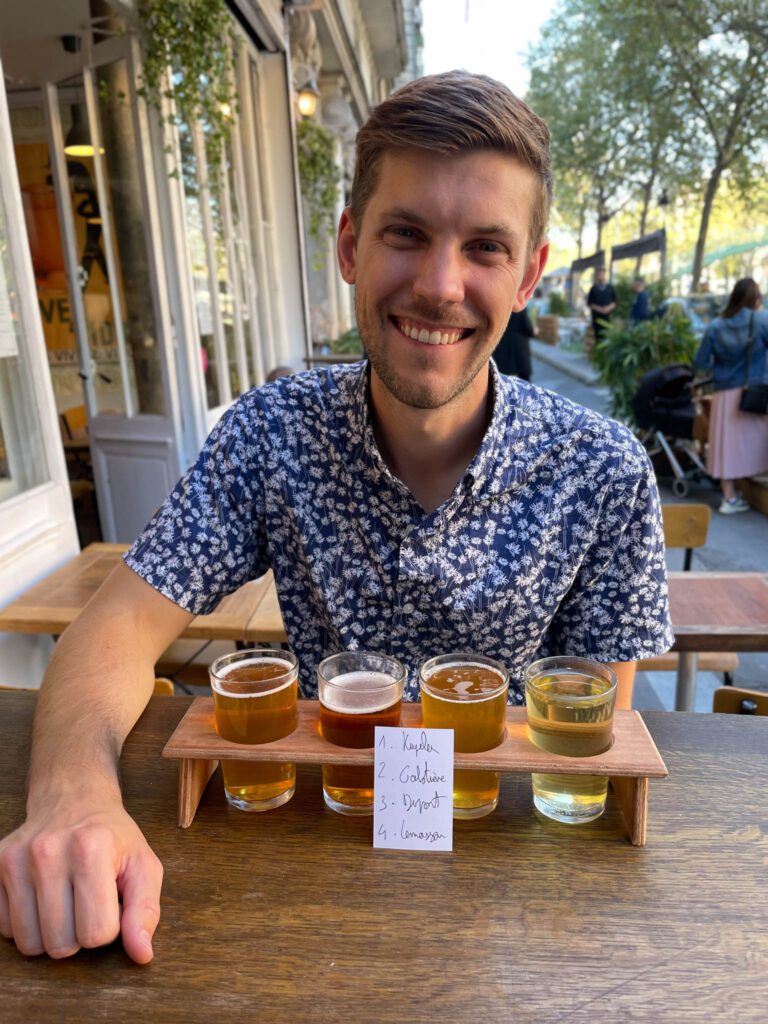

- Boulangerie Chambelland: It’s a little bit south of the canal, but it’s worth the detour if you’re eating gluten free. This is the best gluten free bakery in Paris, bar none. Their breads are outstanding, and their pastries are similarly spectacular. We’d highly recommend it if you or someone in your group eats gluten free and is looking for the full French pastry / bread experience.
- Paname Brewing Company: A cool brewery on the canal at the northern end of the neighborhood. One of the first movers in the craft beer scene in Paris, which was a little slow to take off.
- El Cártel del Taco: Authentic Mexican tacos! Hooray!
- Breizh Café: If you skipped their crepes and galettes earlier, here’s another chance! This location is right on the canal.
An Evening in Montorgueil
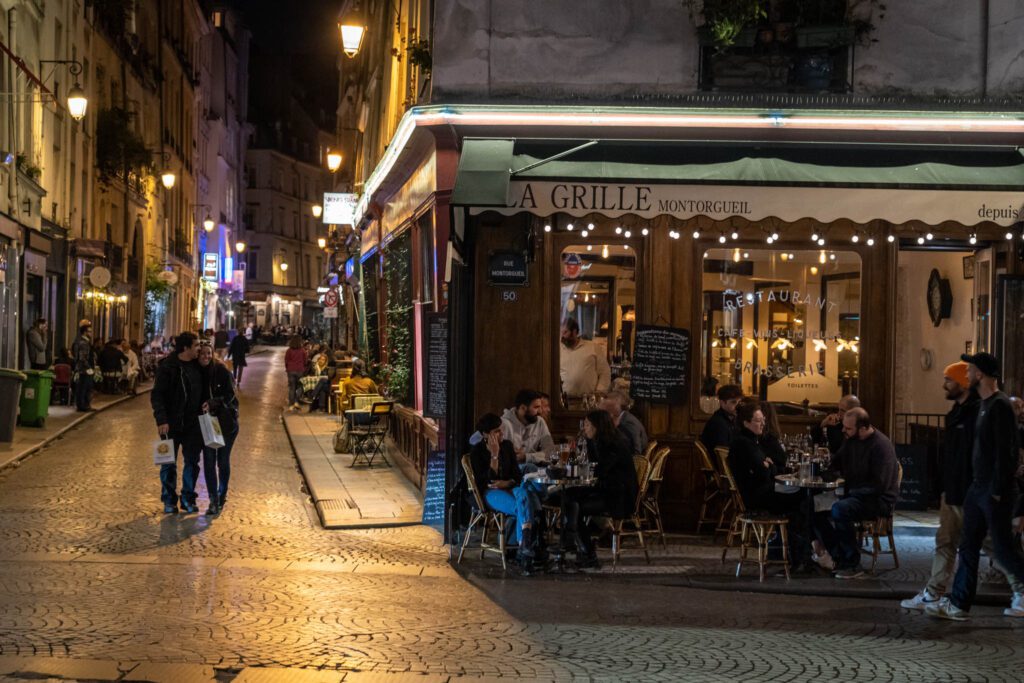
Rue Montorgueil runs north to south through the heart of the 2nd Arrondissement, and is one of the best places for dinner and drinks in the city (in our opinion, anyway). We stayed nearby (in Sentier, another sub-neighborhood in the 2nd Arrondissement), and fell in love with this area.
There’s just so much to eat and drink within a few blocks! It seems as though, on every corner, there’s a quintessentially Parisian bistro with the requisite outdoor seating and people smoking over dinner and drinks.

Here are some places we enjoyed, but you should know that there’s an unlimited amount of options here.
- Kapunka: Solid Thai food, which was a welcome alternative to all the pastries we were consuming.
- Grom: Our favorite gelato shop in the world. No, seriously. It’s that good.
- Substance Café: My favorite coffee experience in all of Paris (read about it in my guide to the best coffee in Paris). The barista is an award-winner, and his philosophy around slow coffee is a welcome respite in a city that is “vite vite vite!”
- Ma Cave Fleury: Two words: champagne bar. They make their own champagne at a winery in… Champagne. It’s biodynamic, and the woman running the shop was super friendly, explaining about the winery as she poured the wines for us.
Day 4: A Day Trip to Versailles

Literally crown your 4 day trip to Paris with a visit to the palace of the Sun King. Louis XIV transformed his father’s hunting lodge on the outskirts of Paris into the monumental Château de Versailles in the 17th century, creating the most famous and grandest sight in France.
It is enormous and splendid at the same time, with all you might expect in terms of lavish ornaments. Make time for the impeccably maintained gardens strewn with sculptures and several notable stops, too.
Getting There
The easiest way to get to Versailles is on the RER C from central Paris (make sure to go for the Versailles Château station and NOT the Porte de Versailles, which is in a different place altogether on the 12 line).
Trains run every 15 minutes from 5:30 am and we recommend getting there early (the trip takes around 40 minutes from Invalides, to give you an idea). Tickets cost €3.65 and you can buy them at the station you’re leaving from. You will find helpful signs as you exit the station.
Visiting Versailles
We recommend a full day of visiting to get the most out of your trip to Versailles. Book your tickets online and you will get a time slot for your visit, helping you plan the day. You can also download a free mobile app instead of taking an audio guide around. It has maps and extra information, too.
A full ticket costs €20 for access to the whole estate and is the best option for seeing the palace, the gardens, and anything you might have time for.
Note: The palace opens at 8:00 am and is closed on Mondays.
Versaille’s Top Sights

The Château and grounds are so vast that the best way to see all the notable parts is to hire a guide. However, here are some must do activities:
- Visit the Royal Apartments.
- Wander through the Hall of Mirrors and imagine you’re at a ball.
- Roam through the gardens and stop at Bassin de Neptune with its 99 fountains.
- If you can, time your visit so you’re there for the Musical Fountains Shows (day and night time displays of water “dancing” set to music, taking place in the summer – extra fees apply, see details here).
Guided Tours of Versailles
To take the stress out of getting to the palace and marching through the whole property on your own, here are our picks for guided tours:
- Context Travel Versailles Palace and Garden Tour – A four hour experience taking you through key sights while a historian tells you the stories behind them.
- Take Walks Closing Time at Versailles – Go in at the final entrance time of the day and spend four and half hours in a small group, taking in the gardens during the afternoon and then visiting the palace once most of the crowds have left.

What to Do with More Time in Paris
Here are five things to consider adding to your itinerary if you find yourself with more than four days in Paris, including a few day trips from Paris.
The Rodin Museum: Our new favorite museum in Paris! The reason we like it is that, rather than being a huge collection of art cobbled together by some rich family centuries ago, it follows the life of the famous sculptor Auguste Rodin, and shows his progression throughout his life from his first official works to world-famous pieces like the Thinker and the Gates of Hell. The garden (really, it’s a sculpture garden) is gorgeous too, and well worth walking around. Get the audioguide! It’s in the 7th Arrondissement – more information like hours and costs here.

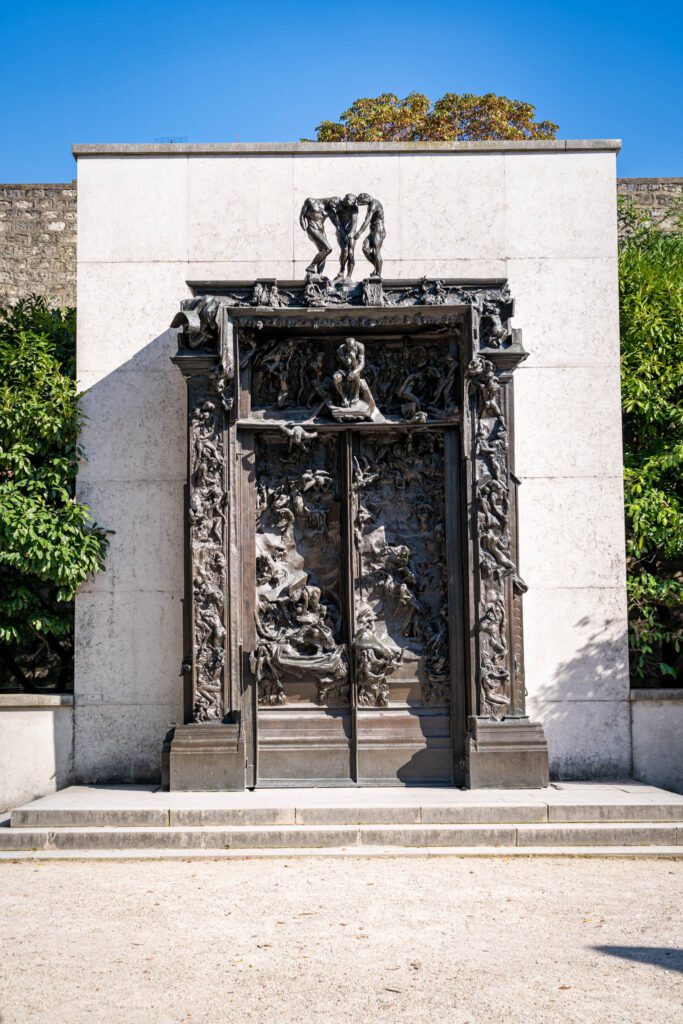
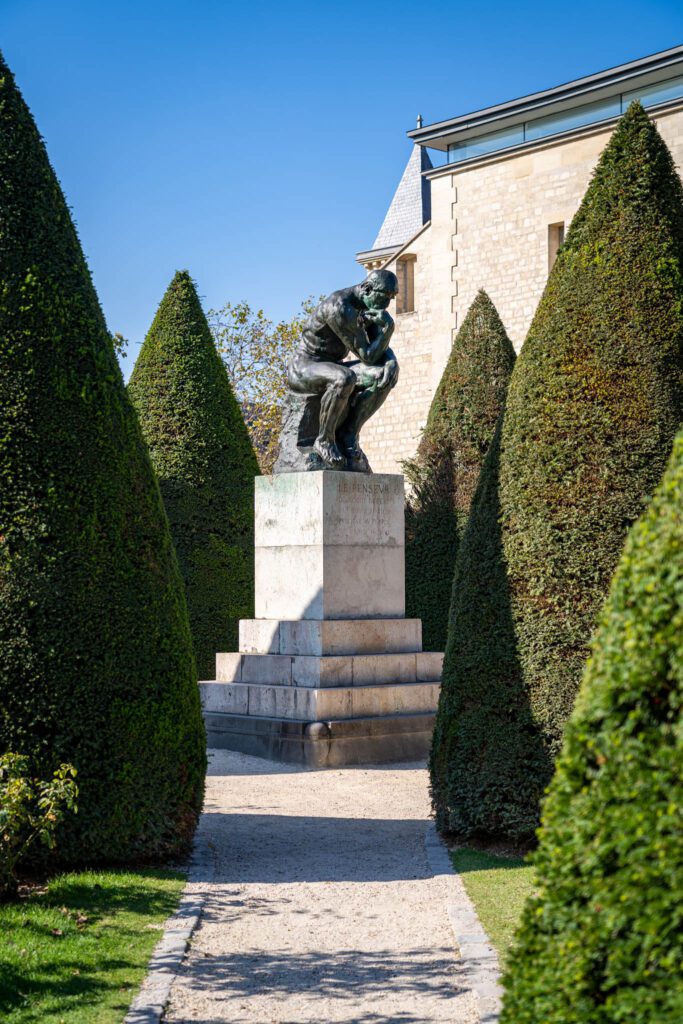
Taste Some French Wine and Cheese: Another food-related experience that was on our list was this French wine tasting experience with an expert in French wine. Oh, and there’s cheese too. You’ll explore the world of French wine with a tasting of five different varietals, all paired with various French cheeses.
The Catacombs: The Catacombs of Paris are a spooky experience. Rather than exploring the City of Lights above ground, you’ll descend into the dark underworld that is the series of tunnels that exists under the streets of Paris and explore a darker side of the French capital. Here’s a guided tour to add to your itinerary.
Visit the Loire Valley: The Loire Valley is southwest of Paris, and is full of fairytale castles – châteaux, including the one that supposedly inspired the Beauty and the Beast – and good wine. On this guided day trip that includes transportation, you’ll go to Chateau de Chambord, do some wine tasting, and explore a smaller town in the Loire Valley.
Full Day Cooking Experience: We decided not to include this full day cooking class as an option in the itinerary above because it’s a long day – probably too long for a 4 day itinerary. But if you have extra time, then it makes for an amazing food experience in Paris. You’ll first do a market tour, which is one of our favorite things to do in cities around the world, and then you’ll dive into a 4.5 hour French cooking experience where you’ll learn things like salmon tartare and coq au vin, the latter is a classic French dish that I made in French class wayyyy back when.
Champagne: No, we don’t mean that you should drink champagne. Well, actually, we do mean that. But what we really mean is that you should drink champagne in Champagne on a guided day trip from Paris. This tour was on our list, but we opted to spend an extra day exploring Paris rather than doing a day trip. It includes transportation (which is important here – it’s hard to do your own version of this tour independently if you don’t have a rental car), multiple champagne houses, and a three-course lunch at a local winemaker’s house.
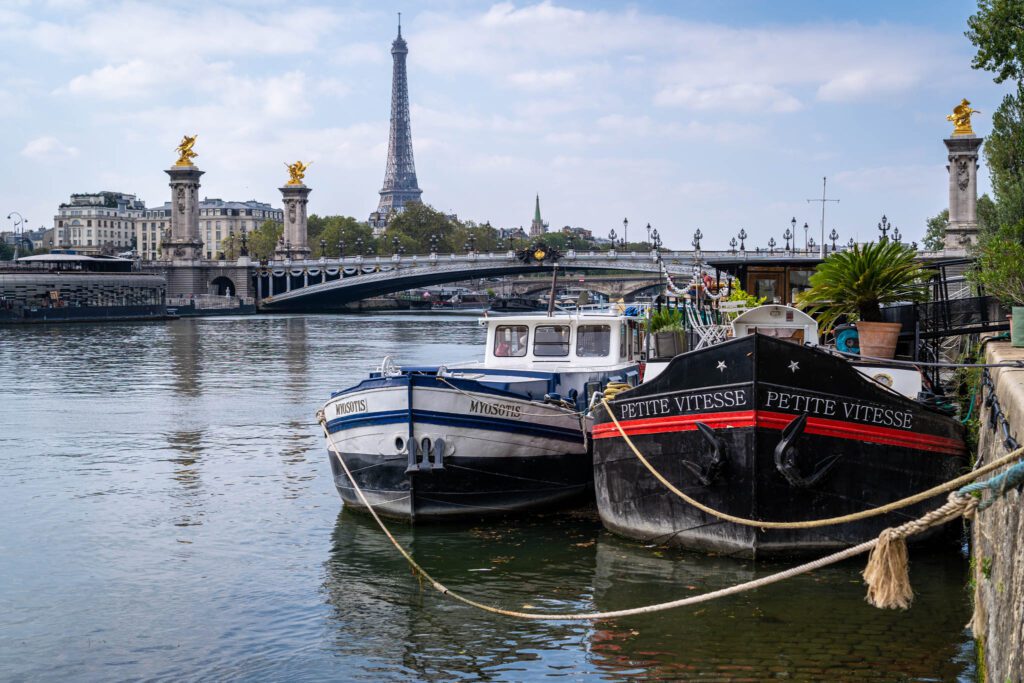
What to Do with Less Time in Paris
With less time in Paris, we’d recommend cutting the number of things you’re trying to fit in. The alternative – trying to fit the same number of attractions into a shorter time – will leave you needing a vacation from your vacation. I’m speaking from experience here.
The first thing to cut is the day trip to Versailles. It’s cool, sure, but at the end of the day it’s just a rich person’s palace with some beautiful gardens. We love the Jardins du Luxembourg in the 6th Arrondissement (they’re in the itinerary above), which are a little less manicured, but are a good substitute.
3 Days in Paris
With three days in Paris, cut the day trip to Versailles and follow the itinerary as written above for days 1-3. This is an easy one.
2 Days in Paris / A Weekend in Paris
If you’ve only got a couple of days in Paris, the first thing we’d do is choose between the Louvre and Musée d’Orsay. There’s so much to see in Paris that, with only a couple of days, we don’t think it makes sense to spend 3-4 hours on each museum, which is the amount of time you’d need to do them both justice.
The second thing we’d recommend is to pick two of the neighborhoods on day 3, and we’d recommend that you choose Montmartre and Le Marais (sorry, Canal St. Martin!).
Here’s what two days in Paris could look like.
- Day 1: Montmartre, Le Marais, and the Eiffel Tower
- Day 2: The Gothic Cathedrals, a Foodie Adventure, the Louvre, and the Arc de Triomphe
You can still use the relevant sections of the detailed 4 day itinerary above to plan out the specifics of your weekend in Paris.
One Day in Paris
Our first tip for spending a day in Paris is to book a second (or third).
Joking aside, trying to see it all in a day just isn’t going to happen, which means you’ll need to prioritize and make some hard choices on what to save for next time.
One big assumption we’re going to make here is that you want to see the Louvre. If that’s true, that’s going to eat up a significant chunk of time that you’re going to have to plan around. You could easily swap the Louvre for the Musée d’Orsay, if you’ve already done the Louvre before, or want something a little different.
We’d also highly recommend investing in a 24 hour Metro Pass to make getting around Paris more efficient.
Here are the things we think you should focus on with one day in Paris:
- The Louvre OR the Musée d’Orsay
- The Gothic Cathedrals and Le Marais
- The Eiffel Tower
We’d start with the Louvre when they open (go to Telescope Coffee, some of the best coffee in Paris, nearby for coffee and pastries beforehand!) and spend the morning exploring their extensive collection, preferably on this guided tour, which we recently did and loved.
Then, make your way east through Le Marais, stopping at the Marche des Enfants Rouge for lunch and exploring the 3rd and 4th Arrondissements en route to the two Gothic Cathedrals, Notre Dame (the interior and bell tower are closed indefinitely, but it’s worth admiring the twin towering bell towers from outside) and Sainte-Chappelle.
To end your day, take the metro over to the 7th Arrondissement to end your day in the shadow of the Eiffel Tower. Stop by Rue Cler for picnic supplies – bread, cheese and cured meat, fruit, and wine if you’re up for it – and head to the grassy area at the foot of the Eiffel Tower.
Relax there for a bit, then walk under the tower (go up to the top if you want – make sure to book tickets in advance) and take in the view from Trocadéro, which is across the river to the west and has our favorite views of the tower.
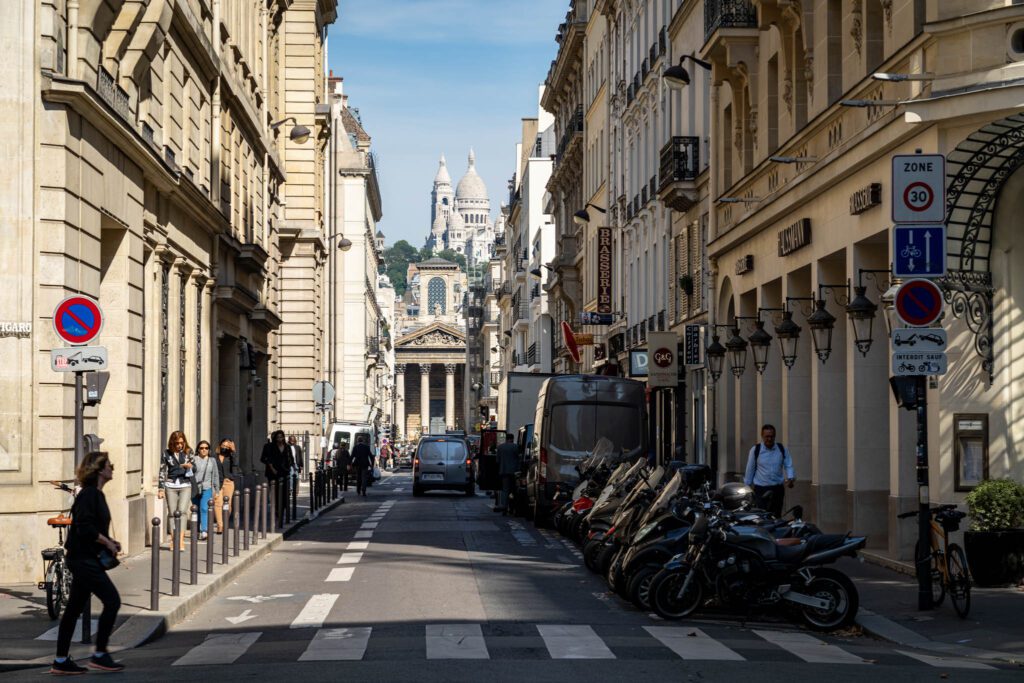
The Best Time to Visit Paris
As a multicultural European city that’s home to over 2 million people, Paris has plenty to offer all year round, regardless of weather or events. However, there are some particularly worthy aspects of each season in the city.
Summer in Paris is hot and sunny, and there are tons of local events to enjoy. If you visit in June, you’ll be able to take in night-time street entertainment during the Fête de la Musique which takes place on the longest day of the year, June 21.
Go in July and you might catch the fireworks of Bastille Day on the 14th while you enjoy a picnic on the Champ de Mars. But be aware that August is a so-called “dead season” as most Parisians take their annual summer vacation then.
Prices in Paris are highest in summer because it’s the peak tourist season, but you can have an amazing time in the city in fall or spring, when temperatures are mild and you can catch some amazing scenery in the many parks and public gardens. The Jardin du Luxembourg is enchanting with its rose garden and orchids. If you visit Versailles, prepare for long strolls through the grounds admiring fall foliage.
Finally, winter in Paris can be cold and gray, without snow but a disagreeable drizzle that cuts to the bone. However, there are many indoor attractions to warm you up. You can enjoy the open-air skating rink at Jardin du Trocadéro or get into the holiday spirit by strolling through the Christmas markets.
How Many Days in Paris?
Paris is massive. Which begs the question, how many days should you spend in Paris?
We think that 4 days is the absolute minimum you should spend. Anything less will have you jetting around from sight to sight with no time to relax and experience what truly makes Paris special. The cobblestone streets in Montmartre. Wandering Le Marais. Relaxing on the banks of the Seine.
That being said, 4 days is enough time to see the major sites and leave plenty of time for exploring.
This itinerary is meant to help you see the best of the city without needing a vacation from your vacation.
If you have more time, we have recommendations above on how to spend it. However, you could also just pick a neighborhood and spend a day wandering from shop to shop, coffee to coffee, wine bar to wine bar.
That sounds like a perfect day in Paris to us.
Getting to Paris
Traveling into Paris is most convenient by plane and you’ll likely arrive at Charles de Gaulle International Airport (CDG), a short train or taxi ride from the city center.
Flying to Paris
Most international flights touch down at Charles de Gaulle Airport (CDG). The RER B train is the most convenient way to get to the city center once you land. It’s a popular mode of transportation and you’ll find it really crowded at times, but it’s the most affordable option you’ll find. Check out all you need to know in this guide.
The other big air hub for Paris is Orly Airport (ORY), frequently a point of arrival for budget airlines or flights from within Europe. You can take the RER B Train into the center of Paris (you’ll be almost at the other end from Charles de Gaulle) or a dedicated bus called Orlyval. Here is the detailed guide on each option.
From either airport, Uber works well for getting into the city center and doesn’t cost a fortune. It can be a great alternative if you have a lot of bags or are traveling in a group, so you don’t have to put up with busy public transportation.
Arriving by Train
From within France or neighboring European countries, you can arrive in Paris at various train stations throughout the city. The Gare Du Nord is – as the name suggests – on the northern end of town and in a slightly seedy neighborhood, so we recommend jumping straight onto the metro from there to your accommodation.
Other train stations include the Gare de Lyon, Gare d’Austerlitz and Gare de Montparnasse, among others. Where they are in the city reflects which part of the country they’re coming in from. All are well connected to the Metro system that will take you to your accommodation easily.
Getting Around Paris
Paris is famous for its efficient Metro network with scenic entrances that adorn many posters (especially from Montparnasse). It is a great way to get around Paris if you need to cover longer distances or if you’re staying a bit out of the center. This guide will tell you all you need to know about using the metro.
If you plan to use public transportation, the RATP (Paris Transport Authority) has a useful app for planning your journey and a helpful website in English. A pass will get you a trip on the metro or buses and you can even take advantage of a good network of night buses (the metro runs until 1:00 am roughly).
If you don’t want to deal with the hassle of a travel pass, you can buy a ticket at the machines upon entering a metro station (you can pay by card and they are all also in English) or a bus ticket from your driver (you’ll need cash).
At the same time, there’s no better way to really get to know the city than on foot. This Paris itinerary has been designed with walking in mind, allowing you to cluster together different essential aspects of Parisian tourism each day.
Finally, if you plan to take taxis, our recommendation is to use a pre-paid app like Uber for upfront pricing and peace of mind.
Bonus Tip: As any city with a major river, Paris can be explored by boat! The péniches are a great way to see the sights from the Seine. Cruise dinners like this one leave from the center and take you around the city at night. You can opt for dinner or drinks while on board and there’s an app to listen to key information about what you’re seeing.

More Paris Travel Guides
Planning a trip to Paris? Matt, who speaks French “really well for an American” (as multiple French people have told him – it’s his proudest achievement in life), loves Paris.
As you get into planning your trip, you might find some of these other detailed guides we’ve written about Paris helpful.

What an amazing amount of information. I just booked the ChouChou Hotel in the 9th arrondissements foe what will be our first trip to Paris. Your information will definitely be used to help plan our trip. Abs when the time comes to book tours I will certainly use the links you have provided as this much information is surely worth you making a few dollars off anyone that uses it as a guide.
Just a thanks for taking the time to give such detailed information about the sights and sounds of Paris. I am truly looking forward to see this magnificent city in April of 2023.
Paris is great (as long as you go in with the expectation that it’s a real city where real people live, not a fairytale). The 9th is a nice home base – definitely don’t miss Aji Dulce, a Venezuelan place there with amazing arepas! It was a food highlight of our trip, for sure. Enjoy!
WOW!! THANK YOU so much for all of this AMAZING information! We are more excited than ever to go now in 3 weeks for our 2 year anniversary. All of the info, links, maps…is priceless. You have made planning our trip so much easier as we were a bit overwhelmed and do not speak French. Thank you!!! We will definitely be sharing your blog with others. We so appreciate all of the work you put into creating this great site! MERCI!
Wendy & Kevin
Hey Wendy and Kevin! A bit late here, but I sincerely hope you loved your honeymoon. Thanks for the kind words – cheers!
This was amazing. Almost perfect for my trip with my daughters in early November to celebrate our bdays. Ty so much
Hey Iris! Hope you had a great trip. Thanks for the kind words – we appreciate you taking the time to write them. Cheers!